

THE ECO-STAY TAKEOVER












ON
48 WHERE THE SEA MEETS SERVICE Taj Fort Aguada Resort & Spa's New Wing of High Luxury
© All rights are Reserved. Reprinting, publishing whole or part without obtaining the express written permission of editor and publisher is strictly prohibited. All the images unless otherwise indicated are used for illustration purpose only. In case you feel that any image/s or content/s should not be there / needs due credits / having copyrights, you may please immediately inform the same to the editor/publisher in written format, the needful will be done in the following issue.
To err is human. Although we take due care while publishing the magazine to ensure it is free of any mistakes, any omissions or errors are entirely unintentional. In case you find any erroneous photographs, language, missing credits or anything else published incorrectly, please feel free to bring it to our notice. We believe in publishing matters that catch our readers' attention and at the same time impart information. We hope all our readers appreciate the content and help us make this publication
better and more useful.








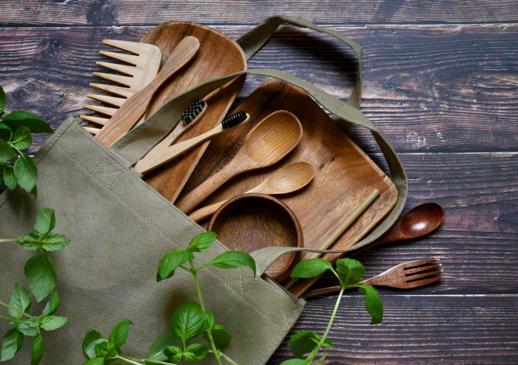


ADITI MALHOTRA MANAGING EDITOR
THE SEASON OF BUZZ
Hello,dearreaders!
There’s a certain buzz in Goa right now that you can almost taste. The rains are loosening their grip, the skies are clearer, andthe calendarahead feels fullagain.You cansense itin the traffic on weekends, in the chatter at beach cafés, and in the way restaurants start experimenting with menus to match the energyoftheseason.
What makes this time special is the anticipation. Tourists are trickling back in, locals are gearing up for festivals, and every street corner feels like it’s humming with plans. The season ahead is long, but it’s also alive with promise. Goa always seems to reinvent itself at this point, sometimes through new cafés that suddenly become everyone’s favourite, sometimes througholdclassicsthatfindnewwaystosurprise.
Food becomes the heartbeat of this buzz. Shared plates, cocktail menus with a twist, fresh produce arriving at markets, all of it sets the stage for months of indulgence and connection. And in the hospitality world, this is when things shift gears. Hotels, bars, and eateries aren’t just preparing to serve;they’repreparingtocelebrate.
This month feels like the warm-up to something bigger, and maybe that’s the beauty of it. We aren’t quite at the peak yet, but the hum is already here, building day by day. Whether you’re a local watching it unfold or a visitor soaking it in, it’s impossiblenottobesweptupintheexcitement.
So here’s to the buzz, to the energy, and to all the meals, moments, and memories waiting to be made in the season ahead.
Untilnexttime, Cheers
Withloveandlight,
Aditi

THE TEAM

Editor in Chief & Publisher
Rajesh Ghadge rajesh@rajeshghadge.com
Managing Editor
Aditi Malhotra aditi@foodandhospitality.org
Contributors
Sunil Malhotra
Armaan Malhotra
Aakash Ghadge
Gauri Ghadge
Maitri Kashyap
Business Development
Anuja Purohit anuja.purohit@gpdm.in
Design & Layouts
GPDM - A Media Company info@goaprism.com
Photography
Rajat Prabhu
Gauri Ghadge Aakash Ghadge
EDITORIAL OFFICES
2nd Floor, Udyog Bhavan, Opp Azad Maidan, Panaji,Goa-403001
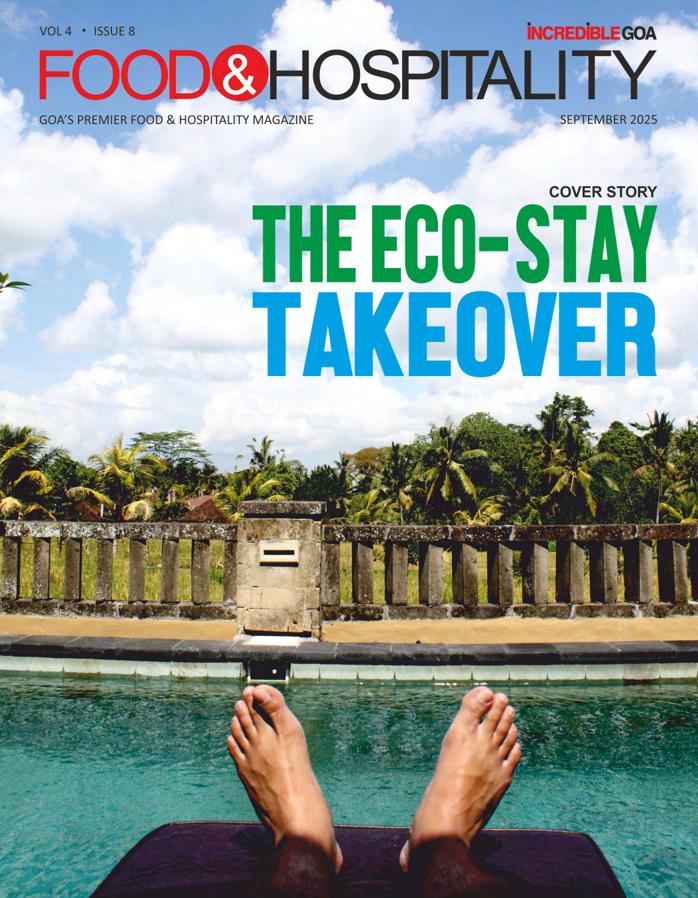

SUBSCRIPTIONS & ADVERTISEMENTS
2nd Floor, Udyog Bhavan, Opp Azad Maidan, Panaji,Goa-403001 +91 8999085172 | info@foodandhospitality.org
+91 8999085172 | info@foodandhospitality.org
The Magazine is Published by GOA PRISM DIGITAL MEDIA Rajesh Ghadge, RNI - GOAENG/2020/00441 www.fnhmag.com
2nd Floor, Udyog Bhavan, Opp Azad Maidan, Panaji,Goa-403001
Cover Photo Credits
Stock Images Credits Rajat Prabhu
@thedarkphoenixstudio
Image by Freepik


IHCLGoaHonorstheSilentHeroesofHospitalityonInternationalHousekeepers’Week

In luxury hospitality, it is often the quietest gestures that create the most lasting impressions. The welcoming fragrance of a freshly prepared room, the immaculate arrangement of linen, the delicate attention to detail in every corner—these are the silent signatures of housekeeping, the very soul of the guest experience. This September, the Indian Hotels Company Limited (IHCL) Goa turned the spotlight on these unsung custodians of comfort with a heartfelt celebration of International Housekeepers’ Week, beginning September 15 acrossallitshotelsintheregion.
A Celebration Beyond the Hotel Walls
What makes this year’s celebration distinctive is its inclusivity. IHCL Goa extended the festivities beyond its properties, inviting educators, community leaders, and changemakers from Goa’s leading hospitality schools to participate. By weaving together the voices of industry professionals and aspiring talent, the initiative not only acknowledged the indispensable contribution of housekeeping teams but also reinforcedtheideaofserviceasbothacraftandacalling.
“Housekeeping is the silent heartbeat of hospitality,” said Ms. Sarita Fernandes, Area Director – Housekeeping, IHCL Goa.
“Guests may not always see us, but they always feel us—in the comfortoftheirrooms,thefreshnessoftheirsurroundings,and the warmth of thoughtful details. This week is about celebrating that spirit, while inspiring the next generation to view housekeeping not just as a profession, but as a profound expressionofcare.”
Showcasing Craft, Innovation, and Sustainability
The weeklong program was designed to reflect the evolving
role of housekeeping in contemporary luxury hospitality. From interactive workshops and expert panel discussions to immersive sessions for students, the celebrations highlighted themes such as sustainability in housekeeping, wellnessdriven guest care, and innovative service delivery. By engaging hospitality students directly, IHCL Goa built a bridge between academic learning and lived practice, offering a firsthand view of the standards and values that definethebrand’sethos.
At the inaugural session hosted at Taj Cidade de Goa, Horizon, the sentiment was perfectly captured by Mr. Ranjit Phillipose, Sr. Vice President – Operations, IHCL Goa. “On International Housekeepers Day, I extend my heartfelt gratitude to the incredible housekeeping teams who form the very backbone of our hospitality. Their dedication, precision, and warmth ensure that every guest experiences the true essence of care and comfort. Beyond maintaining impeccable standards, they bring heart into every detail—transforming rooms into welcoming sanctuaries. Their work often goes unseen, yet it is deeply felt by all who walk through our doors. Today, we celebrate their commitment, resilience, and pride in service.
To our housekeeping colleagues—you are the silent heroes of hospitality,andwesaluteyou.”
The True Heart of Hospitality
As Goa cements its place as a global destination for luxury, culture, and wellness, IHCL Goa’s tribute serves as a poignant reminder: hospitality is not only about grand architecture or refined aesthetics—it is about the humility, care, and grace embedded in every detail. International Housekeepers’ Week is a celebration of those who bring that vision to life, often withoutrecognition,yetalwayswithpride.
This initiative reflects IHCL’s ongoing commitment to fostering talent, celebrating excellence, and honoring those whose dedication shapes the very essence of guest experiences. By opening the stage to both society and the next generation, IHCL Goa ensures that the timeless craft of housekeeping continues to inspire, evolve, and uphold the true spirit of hospitality.

Copperleaf Goa – Food, Celebrations & Award-Winning Experiences
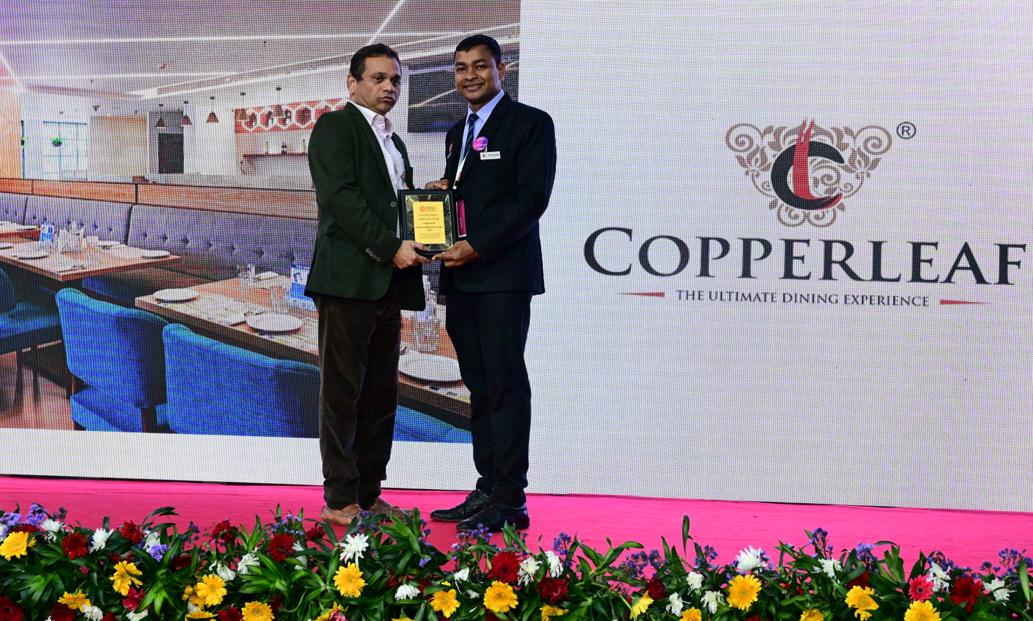
When it comes to food, celebrations, and unforgettable memories in Goa, one name consistently stands out — Copperleaf. Renowned for its warm hospitality, authentic flavors, and thoughtfully curated spaces, Copperleaf has grown beyond being just a restaurant; it has become a destinationwhereeveryvisitfeelslikeacelebration.
Goa's Go-To Destination for Food & Celebrations
From intimate dinners to birthdays and grand family gatherings, Copperleaf has established itself as the perfect backdrop for every occasion. With two flagship outlets — Panaji and Porvorim — the restaurant is known for delivering a wholesome dining experience that blends exceptional cuisine,refinedinteriors,andaward-winningservice. Guests may arrive for the food, but what keeps them returning are the memories created within its walls. From lavish seafood spreads to traditional Goan thalis, Copperleaf's menu caters to both locals and travelers who seek a taste of authenticity presentedwithamoderntouch.
Celebrations Perfected
The restaurant's thoughtfully designed interiors, including private dining rooms, make it an ideal venue for birthdays, anniversaries, corporate gatherings, and milestone moments. What sets Copperleaf apart is the team's commitment to going the extra mile. With personalized buffet menus and impeccable service, every celebration here is seamless, joyful, and infused with flavor. Whether it's raising a toast with friends or sharing a cake-cutting moment with family, Copperleaf ensures that every detail is taken care of, allowing guests to
trulyenjoytheoccasion.
The Copperleaf Experience
Whether visiting Copperleaf Panaji or Porvorim, guests are welcomed into an atmosphere defined by soothing ambience, warm hospitality, and unmatched service. It is this holistic experience that has elevated Copperleaf into one of Goa's most cherished dining destinations.
A Double Treat: Two New Biryani Flavours
Staying true to its promise of constant innovation, Copperleaf recently introduced not one, but two newbiryanis—MurgTikkaBiryaniand Butter Chicken Biryani. Crafted with the finest ingredients and layered with fragrant spices, these creations are designed to delight both traditional biryani aficionados and those eager for something refreshingly different. Every bite is infused with the signature Copperleaf touch, making them the perfect reason to revisit thismuch-lovedrestaurant.
Honored at the World Hospitality Expo 2025
Adding to its growing list of achievements, Copperleaf was recently recognized at the World Hospitality Expo 2025, where it received the award in the prestigious category of Eclectic Design. This honor is a testament to the restaurant's vision of creating spaces that seamlessly unite food, culture, anddesign.
The award was received by Restaurant Manager, Mr. Milan Pradhan, from Mr. Dattaram Kandalkar, Client Partner –Business and Director at World of Hospitality, marking a proud moment for the entire Copperleaf family. The recognition not only acknowledges Copperleaf's commitment to excellence but also celebrates the hard work and creativity of its team, who continue to set new benchmarks in Goa's hospitality scene.
The Essence of Copperleaf
At its core, Copperleaf is more than just a place to dine. It is where families come together, friends reconnect, milestones are celebrated, and food lovers explore the very best of Goa's culinary heritage. With award-winning design, inventive culinary additions, and a reputation as Goa's premier celebration hub, Copperleaf continues to redefine the essenceofdininginthestate.

GoldenChantilly:Goa'sDessertSolitaire

In a world saturated with sugar-coated trends, Golden Chantilly stands apart as a quiet rebel. This dessert atelier is notmerelyaplacewheresweetsaremade;itiswheretheyare crafted with intention. Born in 2018 from the humble home kitchen of Ericka Fernandes, Golden Chantilly has grown into a name synonymous with fearless creativity, understated elegance,andanunwaveringdevotiontochocolate.
A Path Forged in Chocolate
Ericka's journey into the culinary world was anything but conventional. With a background in public relations, she chose to carve her own way rather than follow traditional paths or culinary schooling. Driven by instinct and an unshakable love for chocolate, she learned through a cycle of experimentation, failure, and persistence. Every setback becamealesson,andeveryattemptrefinedhercraft. Her guiding philosophy is simple yet profound: simplicity with intention. At Golden Chantilly, every dessert tells a story—and nonearetoldwithshortcuts.
Signature Creations
From the ethereal Bolo Sans Rival—light as air yet decadently rich—to the Signature Chocolate Dome, an intricate play of textures and flavors, each creation reflects Ericka's belief that flavor must always take center stage. The much-loved Classic Chocolate Cake embodies this ethos perfectly: rich, dark, and unapologetically indulgent, yet crafted without unnecessary embellishment.
Golden Chantilly's desserts are not mass-produced or trenddriven. Each ingredient is selected with precision, from cashews preserved with care to handpicked local nuts that elevate every bite. The result is confectionery that feels both timeless and personal—desserts stripped of pretense, offering
pure indulgence in its most authenticform.
Beyond
Trends, Toward Timelessness
Ericka's vision for Golden Chantilly is refreshingly distinct in today's fast-paced culinary landscape. It is not about flamboyant techniques or flashy presentation, but about creating honest, soul-satisfying desserts for those who recognize the difference betweengoodandgreat.
Golden Chantilly is not designed to please everyone—and that exclusivity is its charm. It caters to the discerning palate, to those who appreciate that true luxury lies not in glittering packaging, but inthethoughtfulcareandpassionpouredintoeverybite.
Dessert for the Fearless
Golden Chantilly has become a sanctuary for dessert lovers who seek authenticity. It is for the fearless, the discerning, and the unapologetically passionate—those who find joy not in fleeting fads, but in the quiet power of a dessert made with heart.
In the landscape of Goa's evolving food culture, Golden Chantilly shines as a solitaire—a singular gem that redefines indulgencebykeepingitreal.


FOOD AS MEMORY THERAPY
Why Nostalgia Tastes Better
By Gauri Ghadge

A TASTE THAT TIME CANNOT FADE
Close your eyes and think of the dish that first comes to mind when you hear the word “home.” Perhaps it’s the smoky xacuti your grandmother stirred with slow patience, the bebinca layered with ritualistic precision during Christmas, or the humble ros omelette you devoured at a street corner after school. Whatever your answer, it is almost certainly not a Michelin-starred plate of haute cuisine but something profoundly familiar. This is because food is not just sustenance; it is memory therapy. Every bite we take can be a keythatunlocksthemostintimatearchivesofourpast.
Scientists call this the “Proust phenomenon”, after Marcel Proust, whose taste of a madeleine cake dipped in tea unleashed a flood of childhood memories. Modern neuroscience confirms what we intuitively know: smell and
taste are uniquely powerful at triggering emotions and memories because olfactory pathways project strongly and relatively directly to limbic regions for memory and emotion, most notably the amygdala and hippocampus, helping explain why smells unlock autobiographical scenes so vividly. Unlike visual or auditory cues, flavours bypass cognitive filters, strikingstraightattheheart.
THE NEUROSCIENCE OF NOSTALGIA ON A PLATE
While we often describe food memories as “taste,” they are mostly built on flavour, a multi-sensory construct combining taste, aroma, texture, and even sound. A spoon cracking into a crème caramel, or the crunch of poi toast with butter, leaves imprintsasmuchasthesweetnessitself.
Research shows that odour-evoked memories are not only more vivid but also more emotionally charged than those

triggered by sights or sounds. That’s why the scent of roasted cashew nuts can transport a Goan abroad straight back to a Mapusamarket.
Even physiology aligns with this. Retronasal olfaction, the process by which aromas travel from the back of the mouth to thenasalcavity,recruitsbrainregionsusuallylinkedwithtaste. This blending makes smell and taste indistinguishable during eating,superchargingtheemotionalresonanceofflavour.
In simple terms: when you eat your mother’s sorpotel, you aren’t just tasting spice and vinegar; you are tasting the Sundaymornings,familylaughter,andritualsattachedtoit.
COMFORT FOOD: MORE THAN JUST CALORIES
During stressful times, many of us instinctively reach for “comfort food.” But what really comforts us? Is it the sugar and fat,orthememory?
A review of odour-evoked memory studies suggests that pleasant food-related memories can lift mood, reduce stress, and promote psychological well-being. In fact, researchers have found that simply smelling a food associated with happy memoriescanreducecortisol(thestresshormone).
But there’s nuance: other studies caution that it isn’t nostalgia alone that heals, but the joy of any pleasurable eating. A gooey brownie may comfort you even if it doesn’t remind you of childhood, though memory adds an unmistakable bonus layer.
WHEN THE WORLD TURNED TO NOSTALGIA
The COVID-19 pandemic was a masterclass in food-asmemory therapy. With uncertainty everywhere, people worldwide returned to familiar foods. Data from U.S. supermarkets in 2020 showed dry pasta sales up 199%, macaroni and cheese 176%, lasagna and pizza ingredients 126%,andramen117%.
India mirrored this trend. In Goa, social media was flooded
with families rediscovering bebinca, patoleo, and batica recipes. Packaged staples flew off the shelves, and bakeries reintroduced retro puddings. Even fivestar hotels began curating “throwbackmenus,”bringing back dishes like serradura andcaramelcustard. This was not indulgence alone; it was therapy through ritual. Nostalgia became a coping mechanism, and the kitchen,asanctuary.
WHY NOSTALGIA TASTES “BETTER”
Objectively, your grandmother’s xacuti might not be as technically “perfect” as a fine-dining version. Yet to you, it will alwaystastebetter.Why?
Ÿ Expectation Bias: Anticipating comfort heightens positiveperception.
Ÿ Contextual Layering: Shared rituals (family dinners, feast days)amplifyflavour.
Ÿ Memory Fusion: Every bite carries past emotions, which seasonthefoodbeyondingredients.
Ÿ The truth is: restaurants cook recipes. Memory cooks the story.
Goa’s Edible Time Machine
Ÿ Few cuisines carry nostalgia as powerfully as Goa’s, where food is woven tightly with culture, religion, and identity. Someiconsofmemorytherapyinclude:
Ÿ Bebinca: The 16-layered Indo-Portuguese dessert, baked slowly, often by grandmothers, is less about taste and more aboutpatienceandChristmaswarmth.
Ÿ Ros Omelette: Street-corner indulgence, equal parts snackandnostalgia,tiedtoeveningsofteenagefreedom.
Ÿ Patoleo: Turmeric-leaf parcels steamed during monsoon festivals,theirperfumeannouncingrainandritual.
Ÿ Xacuti: With its coarse spice paste, it’s a dish tied to Sunday gatherings, weddings, and stories told around the table.
Ÿ Serradura: The humble sawdust pudding, now reimagined in high-end menus, but still carrying memories ofchildhoodkitchens.
Each of these dishes does not just fill the stomach. It anchors identity.
MEMORY AS A MENU: THE INDUSTRY ANGLE
For chefs and hoteliers, nostalgia is more than flavour; it’s strategy. The smartest operators know they are not just selling dishesbutsellingmemoriesbacktodiners.
Ÿ Scent-forward dining: Using aromas (toasting spices,

woodsmoke)asmemorytriggers.
Ÿ Storytelling menus: Naming dishes with personal anchors, “Mapusa Market Prawn Cutlets, 1998” is far more powerfulthanjust“PrawnCutlets.”
Ÿ Ritual plating: Serving bebinca in enamel trays or ros omelette in street-style plates to evoke context without gimmickry.
Ÿ Customisable nostalgia: Offering “two spice paths” in xacuti, one coarse, one refined, letting diners choose whichchildhoodtheyrecall.
Globally, major food brands periodically release throwback items and heritage specials, trading on edible nostalgia. In Goa, restaurants that lean into nostalgia without kitsch are seeingdinersreturnnotjustfortastebutfortimetravel.
THE THERAPEUTIC POTENTIAL
While it may sound poetic, memory-based eating is increasingly explored as therapy. Clinical studies have examined how food-related odour cues can help dementia patients retrieve memories or reduce anxiety. For the elderly, serving familiar dishes can restore appetite and rekindle recognition.
At a population level, designing menus that use nostalgia can boost well-being in stressful times. That’s why “grandmother’s curry” or “heritage Sunday thali” promotions work so powerfully;theytapintodeep,universalmemorycircuits.
FOR THE HOME COOK:
NOSTALGIA ON DEMAND
You don’t need a Michelin star to harness memory therapy at home. A few simple moves can turn weekday dinners into moodmedicine:
Ÿ Anchor a ritual: Dal on Mondays, fish curry on Sundays. Regularityitselfbecomescomforting.
Ÿ Freeze scents: Toast and grind masala blends, store haldi-leaf paste, and keep one “festival” aroma (say, cardamom-saffron)fortoughdays.
Ÿ Cook together: Shared labour deepens memory. A child
rolling chapatis today will remember the laughter decades later.
CONCLUSION: WHY NOSTALGIA WILL ALWAYS WIN
In the end, nostalgia tastes better not because the food is objectively superior but because it is seasoned with biography. A ros omelette is more than gravy on eggs; it is the echo of a friend’s laughter, the sound of a scooter stopping by acart,thefirstsipofcolaunderneonlights.
For Goa, and for the world, food will always be the most democratic therapist. It demands no appointment, charges no fee, and yet heals in ways modern science is only beginning to map.
Nostalgia is not just a garnish. It is the secret ingredient that makesfoodunforgettable.


THEHIDDENLANGUAGEOFMENUS
How Words Seduce Your Appetite
By Gauri Ghadge

Step into a restaurant and you’re handed what looks like a simple object, a menu. Thin card, leather-bound, or glowing on a tablet. At first glance, it feels functional: a catalogue of options, a ledger of prices. But lean in, and you realise it is theatre. Every line has been rehearsed, every pause staged, everywordchosentocoaxyougentlyfromcuriositytocraving. Menus, after all, are not neutral. They are persuasion in print. The font suggests confidence or restraint. The placement of a dish nudges your eyes in deliberate sequence. The phrasing of a single adjective: “heritage,” “artisan,” “slow-braised”, primes your palate before the first bite. By the time the waiter takesyourorder,theperformanceisalreadycomplete. Weliketobelieveourchoicesarerational:thatweorderedthe
prawn balchão because we wanted spice, or the lamb xacuti because we wanted heft. But psychologists and linguists know better. Research shows that the way food is named, priced, and arranged on a page can alter not just what we order, but what we taste. Large-scale menu analyses by Stanford linguist Dan Jurafsky find that pricier restaurants use longer words and more provenance-rich language; each extra letter in the average word length of a dish description correlates with a higher price. Separately, field experiments show that ‘taste-focused/indulgent’ labels make people choose, and even eat more of the same foods than when they’re described inplain,health-focusedterms. Words, it seems, can season the mind as powerfully as spice
seasonsthepot.
And nowhere does this matter more than in Goa. In taverns and shacks, in resort dining rooms and villa kitchens, menus are cultural scripts. They don’t simply list food; they carry memory. A sorpotel described as “feast-day, house-rendered, spiced in tradition” does more than tempt the order, it pulls at history. A feni cocktail titled “Sunset Nostalgia” collapses landscape, longing, and flavour into one sip. Here, where appetite mingles with story, the hidden language of menus doesn’t just seduce thestomach.Itwhisperstothesoul.
THE SPELL OF WORDS
The first seduction happens in language. A plain “fish curry” fills the stomach; a “morjim morning catch simmered in toddyvinegar masala” feeds the imagination. The words reach you beforethefooddoes,sketchingtasteinthemind’seye.
Menus, then, are not records. They are performances. And Goa, with its pantry of storied ingredients, gives writers an enviable vocabulary. “Hand-pounded poi, smoky toddyvinegar marinade, Salcete ladyfinger” is not just a string of descriptors; it’s a promise of labour, locality, and lineage. Dinersleanforward,notonlyexpectingameal,butastorythey wanttotakepartin.
HOW YOUR EYES CHOOSE BEFORE YOU DO
If words seduce the mind, layout seduces the eye. Menu designers once swore by the “golden triangle”, the idea that diners look first to the middle of the page, then top right, then top left, so prime dishes must sit there. But when psychologists strappeddinerstoeye-trackingmachines,theyfoundthetruth was more complex. Many people still read menus like a book, left to right, top to bottom, especially on two-page spreads. Eye-tracking studies of two-page menus find many guests scan left-to-right, top-to-bottom, not just the ‘golden triangle,’sohierarchyandclaritybeatanyone‘hotcorner’.
What matters, then, is rhythm. White space that allows a breath. Bold dish names that anchor the gaze. Short, sensory sublines that reward the careful reader. A menu at a Panjim café that groups dishes into “Coastal Bites,” “Clay Pot Curries,” and “From the Tandoor” not only aids decisionmakingbutalsoframesmood.
This is not designed for design’s sake. It is choreography. The eye is guided like a dancer across a stage, and the diner, often unconsciously,follows.
ANCHORS, DECOYS, AND THE PRICE YOU THINK YOU SAW
Then come the numbers, slyer than adjectives and more persuasive than fonts. Behavioural economics teaches us the anchoring effect: the first price we see sets a reference point. Place a whole red snapper at �3,200 at the top of the seafood list,andthe�1,600buttergarlicprawnssuddenlyfeelmodest. Menus also deploy decoys, one extravagant item that makes the rest appear rational. A shack in Morjim might list a king crab thali at �5,000, knowing few will order it, but it softens the perception of a �2,200 lobster curry. And the left-digit bias works its magic everywhere: �999 registers as meaningfully cheaper than �1,000 because our brains latch onto the first digit,notthelast.
Globally, these tricks are common. But in Goa, where diners are a mix of sharp-eyed locals and indulgent travellers,
restraint is key. Too much manipulation feels like betrayal. The most effective menus guide quietly, so the guest feels not tricked, but clever. These effects are well-documented in behavioural research, anchoring, asymmetric-dominance ‘decoys,’andtheleft-digitbiasin9-endingprices.
WORDS
THAT SWEET-TALK THE SENSES
There is a hierarchy to adjectives. Some paint a picture, “charred, smoky, citrus-bright.” Others signal craft, “handpounded, stone-ground, slow-fermented.” Still others anchor place, “Choraoclams,Assagaochillies,Anjunabasil.”
Studies consistently show that descriptive naming increases not only sales but also satisfaction. Diners don’t just eat what they are served; they search for the qualities promised. A dessert called “grandmother’s bebinca, sixteen patient layers” is not just sweeter in memory; it feels warmer, more human, than“bebinca(slice).”
In Goa, this language is abundant. A reverie’s menus whisper poetry into plating. Taverns in Margao may keep it simple, but even they know the difference between “prawn curry” and “village-style prawn curry simmered with coconut and tamarind.”Wordsherearenotgarnish;theyareseasoning.
HALOS, HONESTY, AND THE WEIGHT OF LABELS
The menu is also a moral stage. Words like “organic,” “local,” and “sustainable” glow with halos. Research shows the mere presence of such labels changes judgment: Controlled studies show identical cookies are judged healthier, and even lowercalorie, when labelled ‘organic.’ This is called the health halo effect.
In Goa, this halo can be powerful. The GI-tag on cashew feni is a marketer’s dream, instantly adding authenticity and value. A café that writes “GI-recognised Nanora feni” signals respect for tradition and provenance. But abuse the halo, like maybe serve truffle oil fries made with synthetic flavour, or write “homemade”onsomethingbottled, andthebacklashisswift. The best persuasion is precision. Name the farmer. Name the fisher. Say “siolim ladyfinger” or “collem organic tomato” instead of hiding behind buzzwords. When the supply chain speaks,adjectivesneednotshout.
GOA’S PLAYBOOK: SEDUCTION ROOTED IN PLACE
Few places offer writers as much linguistic wealth as Goa. Here,wordsaren’tborrowed;theyarelived.
Ÿ Provenance storytelling: “Chapora mussels, tideharvestedatnoon.”
Ÿ Technique as theatre: “Toddy-fermented batter, rested 18 hours.”
Ÿ Ritual and memory: “Feast-day sorpotel, house-rendered fat.”
Ÿ GI pride: “GI pride: ‘Feni (Goa), GI-registered since 2009, distilledinNanora.”
These aren’t tricks. They are truths told beautifully. And they remind us that a menu isn’t just selling food; it’s selling belonging.
WHEN LANGUAGE OVERREACHES
Seduction has a tipping point. A menu overloaded with adjectives, “succulent, mouth-watering, delicious”, reads less like confidence and more like desperation. The diner feels sold to, not spoken with. Similarly, jargon can alienate. A

“gastrique reduction with textural contrasts” might impress a culinary school, but it intimidates a table of friends who only wanttoeatwell.
The rule of restraint is universal: one vivid image, one concrete fact, and one cultural signal are more persuasive than a thesaurus of embellishments. A shack in Baga need not dress up its prawn curry with six adjectives; “prawn curry, coconuttamarind base, fisher’s recipe” is enough to stir hunger and trust. Menus breathe when words are chosen with care, and silence, the space between descriptions, can sometimes be themostpersuasiveofall.
WHY THE SEDUCTION WORKS
Underneath the poetry lies psychology. Three forces explain whythehiddenlanguageofmenusissopowerful:
Expectation Effects
Describe a dish vividly, and the brain actively hunts for those flavours. Diners genuinely taste food differently when primed by language. A “charred, pepper-crusted steak” is rated more satisfyingthantheidenticaldishlabelled“steak.”
Cognitive Shortcuts
Anchors, decoys, and left-digit pricing spare us from mental math. In a busy restaurant, decisions are made quickly. Menus thateasethosedecisionsfeelcomforting,notmanipulative.
Identity Cues
Labels like “organic,” “local,” and “GI-certified” let diners align choices with their values. For conscious eaters, these are not decorations but declarations: proof that food and ethics can sitatthesametable.
Together, these forces make menus less about ink on paper and more about shaping the dining experience itselfA CONCLUSION
In the end, a menu is not paper or pixels. It is persuasion disguised as prose, theatre staged in typeface and spacing. Fonts, placements, and prices may seem technical, but they
are part of a deeper script, one that coaxes desire, affirms memory,andbuildsbelonging.
And nowhere is this truer than in Goa. Here, where the tide delivers fish each morning and taverns carry centuries of ritual, themenuisbothasalestoolandaculturalartefact.Asorpotel thatcallsitself“feast-day,slow-rendered”isnotjustfood, itis a reminder of celebration. A cocktail named “Sunset Nostalgia” does more than quench thirst; it holds a coastline in aglass.
Perhapsthatisthehiddenpowerofmenus:theyremindusthat eating has never been only about food. It is about story, place, and self. The dish may vanish, but the words linger. And that is why, long after the last bite, the appetite they awaken will keepuscomingbackformore.



By Gauri Ghadge
THE ECO-STAY TAKEOVER

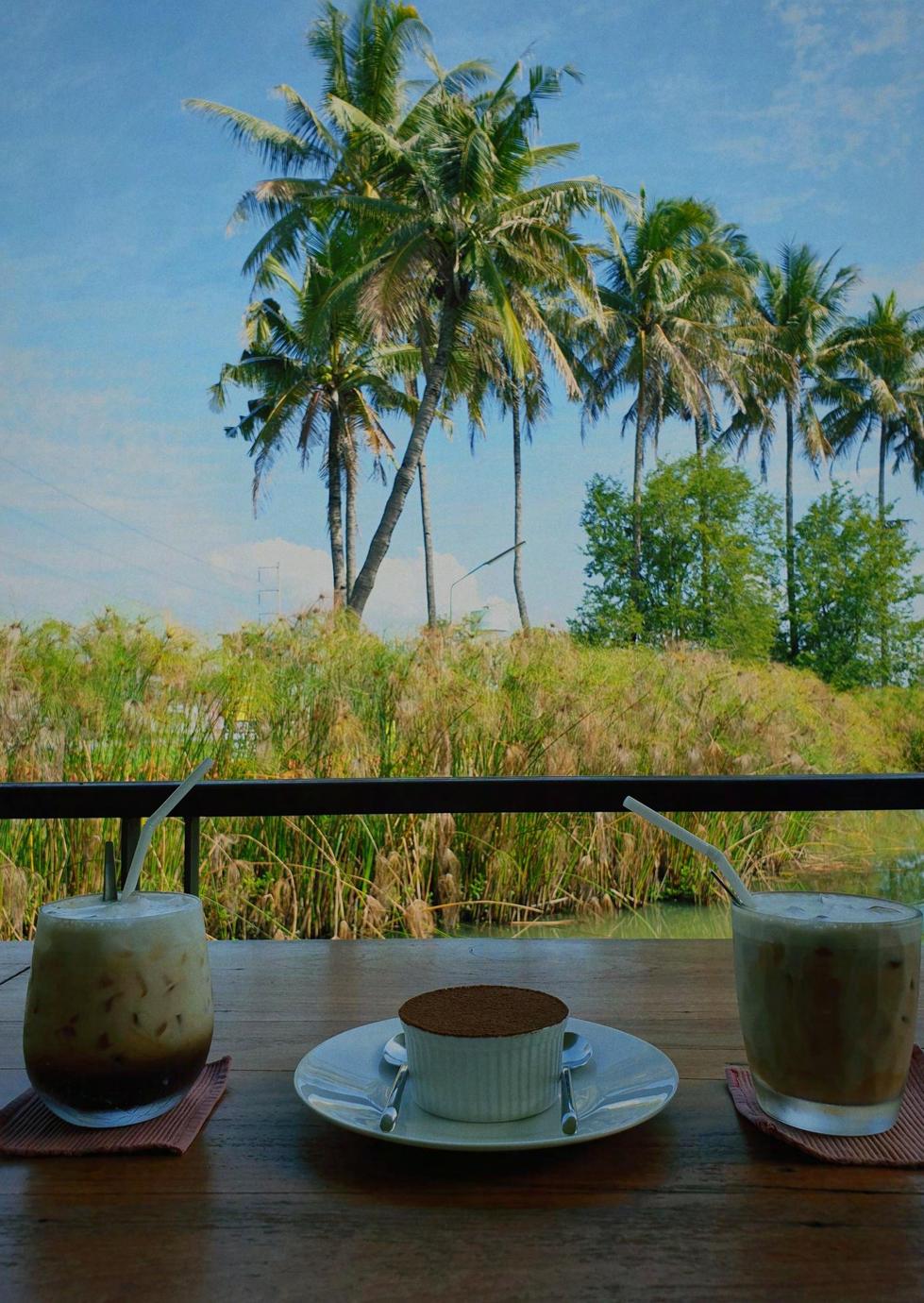
You step into a villa built of laterite and lime plaster, cooled not by machines but by the angle of its walls and the shade of its roof. The air smells of damp earth after monsoon rain. The first sound you notice is silence. Not the manufactured hush of an airconditioned lobby, but the living silence of a place that breathes; cicadas droning in the distance, palms whispering against the evening breeze. Solar panels glint discreetly behind a grove of mango trees. Dinner will be
served under the stars, its ingredients pulledfromtheresort’sowngarden.
Just ten minutes away, a five-star hotel prepares for the same night. Bellboys wheel suitcases across marble floors polished to a high shine. A chandelier blazes overhead, drawing more electricity in an evening than the villa uses in a week. The buffet groans with excess, imported meats, ice-sculpted desserts, and platters that will end in the waste bin. Guests queue at the counter for identikit cocktails as the DJ
beginstotesthisspeakers.
Two visions of Goa. Two models of hospitality. One is centuries old in its ethos but dressed anew, living lightly, using what the land offers, tuned to place and time. The other is the legacy that built Goa’s tourism boom, now straining under its own weight. The question is no longer whether eco-stays belong in Goa. It is whether they will define the future of Goa’s hospitality industry, leaving traditional hotels behind.
THE SHIFT IN THE AIR
The word “eco” used to be a footnote, a recycled paper coaster, a bathroom notice asking guests to reuse towels, a green leaf in a brochure. Today, it’s the headline. Across the world, travellers are voting with their wallets, choosing stays that match their values. Across India, intent is emphatic: multiple studies this year show 96–99% of Indian travellers say sustainable travel matters and they actively want more sustainable choices; around half specifically prefer sustainable accommodations.
In recent years, premium eco-resorts and boutique green villas have begun mushrooming in hinterland villages, along quiet rivers, and even tucked between the palms on busy beaches. They are not budget “hippie huts.” They charge premium rates, host affluent guests, and offer the same comfort as a conventional luxury property, but with aconscience.
The market is responding. Goa’s 2025–26 Budget earmarks ~�440 crore for tourism and offers tax holidays for new three-star-and-above hotels in the hinterland, including a 50% SGST rebate, stamp duty/registration exemptions, and other waivers. Industry reports echo the trend: investors are channelling more money into boutique eco-projects than large resorts, driven by lower operational overheads and highermarketingappeal.
Meanwhile, traditional hotels are wobbling. Room rates in North Goa fell 15–20% this year, not because of fewer tourists, but because of oversupply and a saturation of cookie-cutter hotels. Guests are willing to pay more, but not
for sameness. What they want is difference. What they want is a story. Andeco-staysareofferingit.
GREEN AS LUXURY
Eco was once synonymous with sacrifice. Mud walls, cold showers, compost toilets. A holiday you endured for your conscience. No longer. The new eco-stay is aspirational. Its promise is not frugality, but refinement. Guests lounge in infinity pools fed by rainwater harvesting tanks. They sleep on organic cotton sheets in villas powered by the sun. They sip cocktails infused with herbsgrownmetresaway.
In this new calculus, sustainability is not the opposite of luxury; it is luxury. To waste less is to feel indulgent, exclusive, discerning. To eat produce grown on-site is to know you’re tasting something others cannot buy in a store. To stay in a villa that disappears into the forest is to feel you have escaped not only the crowd but the guilt that comes withit.
Luxury, after all, is always about context. Once it meant chandeliers and foie gras. Today, it means silence, authenticity, and a conscience you can post about. For the eco-stay, Instagram becomes an ally, not an adversary: every bamboo straw, every composting toilet, every solar-lit pathway is a shareablemarkerofdistinction.
And this is where traditional hotels are floundering. Their scale, once their selling point, is becoming their handicap. They can’t pivot fast, they can’t retrofit easily, and they can’t tell stories that feel genuine. Eco-stays, nimble and narrative-driven, are capturing the cultural high ground, and withit,theguests.
THE NEW ARCHITECTURE OF HOSPITALITY
If you peel back the bamboo blinds and look past the Instagram gloss, what makes an eco-stay different is not just aesthetics but architecture. Goa’s new generation of green villas and boutique resorts are built on principles that quietly overturn decades of hotel design.
Instead of carving up land to impose a structure, they let the land dictate the plan. Walls curve with the terrain. Roofs

slope with the monsoon. Materials are drawn from the soil and forest, laterite, lime, bamboo, reclaimed wood, rather than imported concrete and steel. The very bones of these properties are local, breathing the same air and absorbing the same light as the landscapearoundthem.
It’s not just about building smaller; it’s about building smarter. Passive cooling replaces relentless air-conditioning. Cross-ventilation, shaded courtyards, and thick mud walls achieve what
compressors and ducts once did. Rainwater harvesting channels monsoon bounty into year-round storage. Solar panels run kitchens and villas. Wastewater is treated on-site and cycled back into gardens or paddy fields.
And in the process, a new equation emerges. Traditional luxury hotels measured grandeur in marble square footage and chandelier wattage. Ecostays measure it in how little they take and how much they give back. A luxury

villa in 2025 is judged not only by threadcountbutalsobycarboncount. For developers and investors, the math is equally compelling. Smaller plots. Leaner utilities. Lower long-term operating costs. In a state where land is finite and regulation is tightening, ecoarchitecture is not just philosophy; it’s pragmatism.
Goa is no stranger to trends that redefine hospitality. The beach shack once turned the state into India’s bohemian escape. The boutique resort turned it into a global lifestyle destination. Today, eco-architecture is poised to become the next defining layer, not just influencing hotels, but reshaping how Goa itself is imagined in thetraveller’smind.
THE CLASH OF MODELS
Every takeover has its battlefield, and in Goa, the frontline is clear: nimble ecostays versus heavyweight traditional hotels. The clash is not only about who fills more rooms this season. It’s about whose model of hospitality survives the nextdecade.
Eco-stays thrive on narrative. They don’t
just sell rooms; they sell meaning. A night in a solar-powered villa that composts its waste and feeds you vegetables grown on its land becomes a story guests take home. That story is worth more than a buffet or a spa treatment. Traditional hotels, built on scale and sameness, struggle to create thatintimacy.
Economics tells the same tale. Large hotels carry heavy fixed costs: staff, energy, maintenance, that rise each year as wages and utility prices climb. Eco-stays, built lean, carry less baggage. They invest upfront in design and systems, then run light: fewer staff, lower bills, modular utilities. Over time, they can survive price dips that make conventionalhotelsbleed.
Marketing has become another weapon. For years, hotels could get away with greenwashing: a poster about saving water, a sapling drive on Earth Day. But today’s guest scrolls past the façade. They want data, transparency, proof. Eco-stays are delivering it: solar dashboards, wasteto-compost tours, and water meters
guests can see for themselves. Legacy hotels, by contrast, risk exposing the hollowness of their claims if they fail to act.
And then there’s regulation. Goa is tightening coastal zone restrictions, monitoring mangroves, and eyeing water tables. Traditional resorts, sprawling and resource-hungry, are the obvious targets. Eco-stays, often tucked into hinterlands and designed with compliance baked in, dodge the worstofthisscrutiny.
For the moment, both models coexist. The chandeliers still blaze. The buffets still groan. But beneath the surface, the shiftisundeniable.Guestsarechoosing conscience with comfort. Investors are choosing lean with meaning. Regulators are rewarding low impact overhighspectacle.
The clash is not one of ideology but of survival. And as every season passes, the balance tilts further toward the bamboo-roofed villa and further away fromthemarble-linedlobby.
WHEN ‘ECO’ IS JUST A TAG
Every revolution attracts pretenders. As
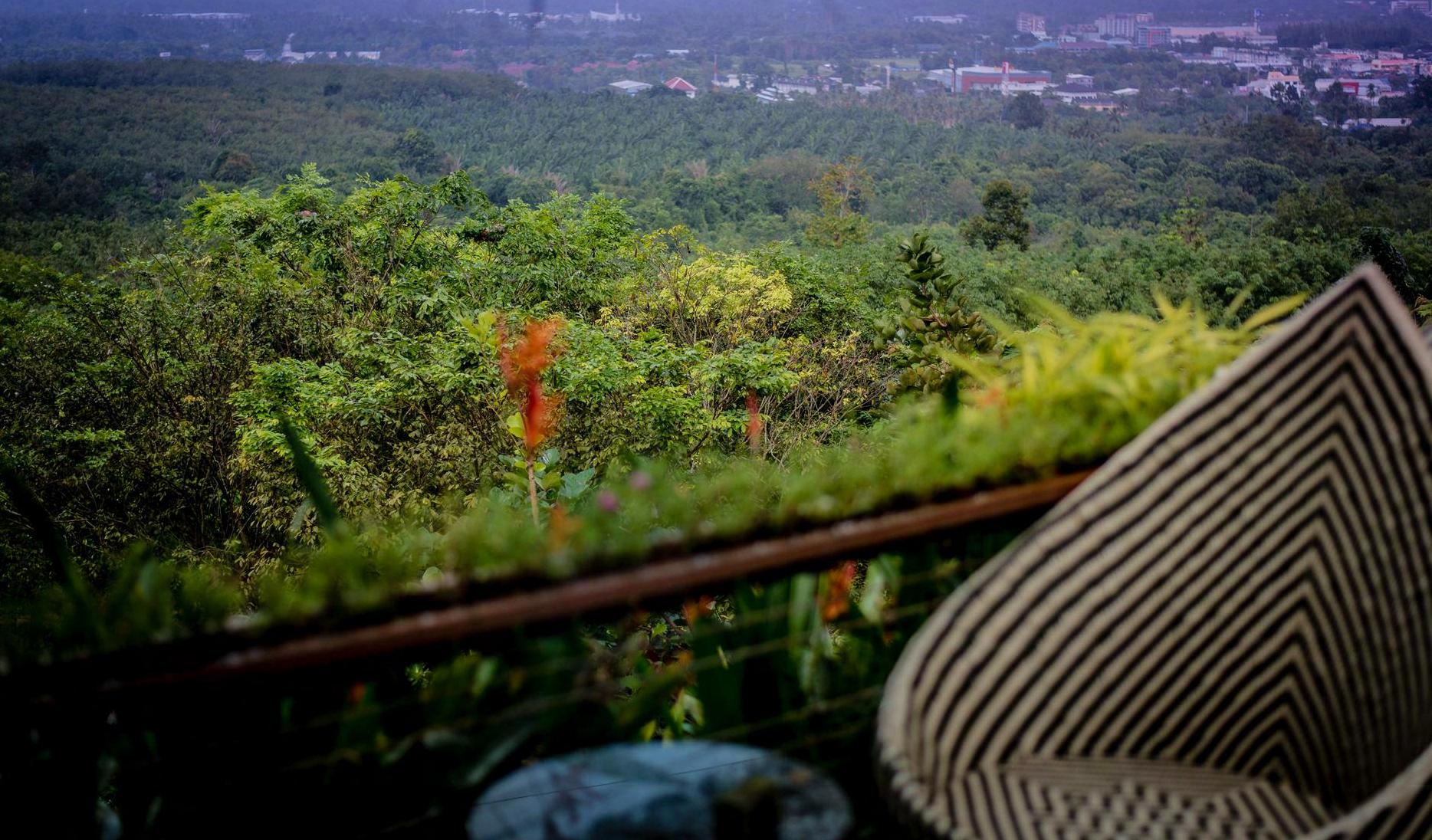
“eco” becomes the hottest keyword in hospitality, not all who wear the badge deserve it. In Goa today, the line between genuine eco-stays and glossy greenwashing is growing dangerously thin.
Some properties slap a bamboo straw in a cocktail and call themselves sustainable. Others boast of towelreuse signs in bathrooms while their kitchens pour thousands of litres of untreated wastewater into village drains. A hotel may showcase a rainwater tank for the brochure shot but rely on borewells for its real supply, quietly depleting groundwater reserves.
The problem is not that these gestures are worthless; every step counts, but that they erode trust. Guests are savvier than hoteliers often realise. They can tell when sustainability is a performance. And nothing kills credibility faster than hypocrisy dressed ingreen.
Certifications like LEED, EarthCheck, or Green Key are emerging as markers of accountability, but even they are not
foolproof. What truly matters is transparency: publishing actual energy, water, and waste metrics, inviting thirdparty audits, and letting guests see systems in action. A composting pit you can visit. A solar dashboard you can read. A kitchen where local sourcing is not a claim but a practice you can taste.
The eco-stay takeover will stand or fall on this distinction. If green remains a marketing gloss, the movement risks collapse under its own contradictions. But if it continues to separate substance from spin, eco-hospitality can reset Goa’s tourism identity for good.
THE GUEST REVOLUTION
At the heart of the takeover is not architecture or policy, but psychology. The modern guest is not who they were adecadeago.
Today’s traveller, whether a millennial couple, a digital nomad, or a family from Mumbai, is more conscious of their footprint. They may not phrase it in carbon counts, but they know that endless buffets and air-conditioned
lobbies feel out of sync with the climate realitytheyreadabouteveryday. And crucially, they are willing to pay for alternatives. Surveys this year are unequivocal: Indian travellers overwhelmingly want sustainable choices (96–99%), and around half actively prefer sustainable accommodation. For Goa, a destination where experience is already the currency, this shift is seismic.
For guests, eco is not a sacrifice. It is a new form of indulgence. Posting a photo from a mud-walled villa with the caption “carbon neutral” signals not austerity but status. Eating from a farmto-table menu is not about denying yourself choice but about claiming authenticity. The eco-stay transforms virtue into luxury, and in doing so, rewirestheverydefinitionofaspiration. Traditional hotels still sell sameness: identical rooms, predictable service, and generic buffets. Eco-stays sell difference. And in an age of oversharing,differenceispriceless. The guest revolution is not passive. It is
active, insistent, demanding. And the properties that answer it with sincerity aretheonesshapingthefuture.
THE INVESTOR’S EYE
Money has a way of spotting the wind before others feel it. And right now, capitalinGoaisflowinggreen.
Large hotel chains, weighed down by debt and high operating costs, are finding it harder to raise new investment. Boutique eco-villas, on the other hand, are magnets for capital. Developers love them: smaller plots, fewer rooms, quicker build times, higher marketing appeal. Investors love them: lean operating costs, premium positioning, and the chance to ride the sustainability wave that global funds areincreasinglyprioritising.
It’s no accident that Goa is seeing a spurt of high-end villa projects marketed not just as luxury, but as “conscious luxury.” For buyers, these are not just holiday homes; they are branded assets, rentable at a premium to eco-conscious travellers. For operators, they are easier to manage, withtightermarginsandgreateragility.
The state, too, is nudging the current. With budget allocations for sustainable tourism and incentives for hinterland development, Goa is signalling that green is the future it wants to fund. Investors read these signals. And they are adjusting their portfolios accordingly.
The eco-stay takeover is not just about traveller sentiment. It is about where the money is flowing. And right now, the flowisunmistakable.
THE FUTURE ON THE LINE
Every takeover leaves casualties. For Goa, the eco-stay wave carries both promiseandperil.
If done right, eco-hospitality could be the state’s salvation. With its fragile coastline, overburdened infrastructure, and stressed water tables, Goa cannot afford another decade of conventional expansion. Villas that recharge aquifers, resorts that compost waste, hotels that plant mangroves, these are not luxuries; they are survival strategies. They anchor Goa’s tourism to a future wherethelandisstilllivable.
But if done wrong, eco-stays could deepen the very cracks they claim to heal. Hinterland villages overrun by boutique developments. Fragile forests carved up for “eco” resorts that are eco in name only. Communities locked out of common resources while outsiders profit from their land. The green badge could become another mask for extraction.
The truth is, Goa stands at a crossroads. The eco-stay takeover will either become a blueprint for resilience or another chapter in over-tourism. The difference will be in accountability, whether sustainability is a practice measured and lived, or a logo pasted onglossybrochures.
For hoteliers, the choice is equally stark. Reinvent or risk irrelevance. The guest has moved on. The investor has moved on. Even the regulator has moved on. A hotel that still sells chandeliers as aspiration while ignoring carbon as liability is not just behind the curve, it is alreadyobsolete.
The future of Goa’s hospitality is not in more rooms. It is in smarter rooms. And thefutureisalreadycheckingin.
VISION 2030: GOA’S GREEN HORIZON
Picture Goa in 2030
The coastlines are not lined with concrete but restored mangroves that buffer storms. Boutique villas rise quietly within cashew groves, powered by the sun, harvesting rain, feeding their guests from soil beneath their feet. Large hotels that survived have shed their marble skins and rebuilt themselves as regenerative complexes, their waste streams closed, their water tablesreplenished.
Travellers come not just for beaches, but to experience a model of hospitality that feels ahead of its time: carbonneutral stays, immersive community projects, regenerative menus. Instagram no longer shows only neon-lit clubsandsunsetcocktails, itshowsrice fields being harvested beside villas, reef-restoration dives,and treeplanting ceremonies that are part of theguestitinerary.
Goa, once typecast as India’s party
capital, is rebranded as India’s green jewel. The small state that once struggled under the weight of tourism becomes the one that shows the nation — even the world — what sustainable hospitality can look like when taken seriously.
This is not utopia. It is a possibility. And the road between here and there is being paved by the choices made today, by hoteliers, by investors, by regulators,bygueststhemselves.
CLOSING NOTE: THE LIGHTEST FOOTPRINT
Goa has always been more than a destination; it is a canvas, and every wave of hospitality has left its mark. Some painted it with romance, others with excess. But the eco-stay takeover is different. This time, the brushstrokes arenotoptional.Theyareurgent. Because this is not about the next season’s trend. It is about whether Goa will still have seasons to offer. The land is speaking in dried wells, eroded coasts, flooded streets. The guests are speaking in their choices, demanding conscience with comfort. The investors are speaking with their capital, betting green.
What remains is for the industry to decide: will Goa lead India’s sustainable future, or will it choke on its owncontradictions?
One truth is inescapable. The most valuable room in tomorrow’s Goa will not be the one with the best view, the largest pool, or the highest tariff. It will be the one that proves luxury and responsibility can coexist, that indulgencecanheal,notharm. The eco-stay takeover is not waiting for permission. It is already here, rewriting the rules of hospitality. And for every hotelier, developer, and guest, the choice is stark: adapt and thrive, or resistandfade.
Goa’s next chapter will not be remembered for chandeliers or buffets. It will be remembered for how lightly we chose to walk, and whether our footsteps led to paradise preserved, or paradiselost.


BEETROOT FALAFEL WITH GARLIC TAHINI
By Aditi Malhotra
Colourful,healthy,andperfectforwhenyouwantfoodthattastesasvibrantasitlooks.
Falafel is traditionally a Middle Eastern chickpea fritter, but here it gets a bright, earthy twist with beetroot. The result is a plate of crispy patties that are as striking as they are delicious. Pair them with creamy garlic tahini and you have a dish that's not just nutritiousbutalsorestaurant-worthyathome.
INGREDIENTS
For the falafel:
1 cup chickpeas, soaked overnight
1 small beetroot, peeled and grated
3 cloves garlic
1 small onion, chopped
2 tablespoons fresh coriander leaves
2 tablespoons fresh parsley or mint leaves
1 green chilli (optional)
1 teaspoon cumin powder
1 teaspoon coriander powder
Salt to taste
2–3 tablespoons chickpea flour (besan)
Oil for shallow or deep frying
Method
For the garlic tahini:
1 cup coriander leaves
1/2 cup mint leaves
1 green chilli
1 small garlic clove
Juice of 1/2 lemon
Salt to taste
1–2 tablespoons water for blending
F Prepare the falafel mix: Drain the soaked chickpeas and add them to a blender with garlic, onion, coriander, parsley, green chilli, cumin, coriander powder, and salt. Pulse until coarse but combined.
F Add beetroot: Mix in the grated beetroot and chickpea flour. The mixture should be slightly sticky but hold shape when formed into balls or patties.
F Shape and fry: Shape the mixture into small balls or discs. Heat oil in a pan and fry until golden and crisp on the outside.
F Make the sauce: In a bowl, whisk tahini, lemon juice, garlic, salt, and water until smooth and creamy.
F Serve: Arrange the falafel on a platter, drizzle with garlic tahini, and garnish with fresh herbs or a sprinkle of sesame seeds.
Tip: Serve the hot pancakes with fresh green chutney and a cup of masala chai.

JACKFRUIT & BLACK BEAN TACOS WITH MINT YOGURT
By Aditi Malhotra
A tropical-meets-global dish that celebrates the magic of jackfruit as a meat substitute. Young jackfruit has a fibrous texture that mimics pulled meat, making it a fantastic base for tacos. When cooked with spices and paired with creamy black beans and refreshing mint yogurt, the result is a fun, colourful, and wholesome dish perfect for casual get-togethers or even a weekday dinner.
INGREDIENTS
For the jackfruit filling:
2 cups young jackfruit (canned or fresh, shredded)
1 onion, finely chopped
2 garlic cloves, minced
1 teaspoon smoked paprika
1/2 teaspoon cumin powder
1/2 teaspoon chilli powder (adjust to taste)
1/2 teaspoon turmeric powder
Salt to taste
1 tablespoon oil
For the black beans:
1 cup cooked black beans (or 1 can, drained and rinsed)
1 small tomato, chopped
1 garlic clove, minced
1/2 teaspoon cumin powder
Salt to taste
Method
For the mint yogurt:
1/2 cup thick yogurt
2 tablespoons fresh mint leaves, finely chopped
1 tablespoon lemon juice
Salt to taste
To serve:
Small tortillas (corn or flour)
Shredded lettuce or cabbage
Sliced onions
Fresh coriander leaves
F Cook the jackfruit: Heat oil in a pan, add onion and garlic, and sauté until golden. Add shredded jackfruit, paprika, cumin, chilli powder, turmeric, and salt. Cook for 8–10 minutes until jackfruit is tender and slightly crisp at the edges.
F Prepare the beans: In another pan, sauté garlic in a little oil. Add chopped tomato, cumin, and salt, then stir in the cooked beans. Let it simmer for 5 minutes until thick.
F Make the mint yogurt: In a small bowl, whisk yogurt with mint leaves, lemon juice, and salt until smooth.
F Assemble the tacos: Warm tortillas, spread a spoonful of black beans, top with spiced jackfruit, and add shredded lettuce, onions, and coriander. Finish with a drizzle of mint yogurt.
Tip: For an extra crunch, add pickled jalapenos or quick-pickled red onions.
TABLE FOR ONE
The growing culture (and luxury) of solo dining
By Gauri Ghadge

The waiter glides past with the quiet choreography of a stagehand, sets down a single linen napkin, a single water glass, a single menu. There’s no awkward pause for a missing companion, no sympathetic smile. Just a subtle nod that says: you’re expected. In 2025, the table for one has moved from exception to experience, and, often, to
indulgence.
Across the world, the numbers point the same way. Industry research in the United States finds nearly half of younger consumers prefer to eat alone, 49% of millennials and 46% of Gen Z, while analysts report that about one in six (15.6%) full-service restaurantvisitsisnowmadebyasolodiner

Asia wrote this story early and boldly. South Korea gave it a name: honbap, the unapologetic act of eating alone, rising alongside a record share of one-person households. Japan refined the experience with privacy booths at ramen institutions like Ichiran, where a diner faces a bamboo blind, orders silently, and receives a bowl like a private ceremony; the point is not isolation but focus, the luxury of undisturbed attention. In South Korea, single-person households have reached an all-time high (� 36.1% of households in 2024), and Japan’s Ichiran codified the privacy-booth format explicitlyfor“flavor-focusing”solodining.
India, long social at the table, is changing quickly. Editors, chefs, and reservation platforms have called solo dining a 2024–25 reality, not a novelty; mainstream coverage and trade press alike describe the stigma fading in metros from Bengaluru to Mumbai, and increasingly in holiday towns where travellers want to eat well without bookingatablefortwo.
What’s shifting is not just behaviour; it’s hospitality grammar. The old cadence, “Are you waiting for someone?”, is being replaced by a new choreography: single-setting tables that don’t look like afterthoughts, menus engineered for one
without penalty pricing, and servers trained to read the solo guest’s tempo. Some guests want conversation; some want invisibility. Great service is learningwhichwithinaminute.
Green shoots are visible in reservation data, too. Consumer polling shows 52% of respondents plan to dine solo this year, with intent strongest among Gen Z and millennials. Operators respond with better counter seating, single-portion tasting menus, and walk-in perches that feel like a privilege,notacompromise.
FROM NECESSITY TO LUXURY
The most revealing change is that solo dining is no longer coded as thrift. It sits, increasingly, in the register of luxury. Consider the modern omakase bar, the chef’s counter at a fine-dining room, or the eight-seat tasting menu that sells out weeks in advance: these are inherently solo-friendly formats built around intimacy and attention. For a certain stripe of diner, the highest indulgence is not a corner banquette but a front-row seat to craft, quiet,concentrated,andpersonal.
Luxury brands are adjusting. Wine directors pour half-glasses and curated flights; pastry teams plate tasting trios sized for one; bartenders design “chaptered” cocktails, three small pours that tell a
story across a sitting. Even hotel cafés, those last bastions of lobby anonymity, are leaning into the single guest with power-breakfast counters, well-lit window perches, and menus that make a solo order feellikeacompletearcratherthanacompromise.
THE BUSINESS CASE: ONE IS NOT A SMALL NUMBER
For operators, the point is pragmatic as much as poetic. If one in six visits is a table for one, that is a traffic pattern you design for, not around. Counter seating increases sellable inventory; deuceoriented layouts smooth turns without the optics of an empty four-top; a small slate of single-portion plates reduces food waste while encouraging addons. The economics can be attractive: solo diners often order with clarity, one great plate, one drink, onedessert,pushedbynogroupveto.
Technology accelerates the shift. Booking platforms enable frictionless single-seat reservations and wait-lists; digital menus let kitchens present smaller formats without clutter; POS data flags patterns in dwell time so managers can sequence seating without making solos feel hurried. In cities with latenight cultures, restaurants are discovering that solo diners reliably fill soft shoulder periods, early dinners, late desserts, and post-event snacks, flatteningpeaksandtroughs.
THE CULTURE TURN: FROM STIGMA TO SELFPOSSESSION
Culturally, the turn is profound. Media from London to Sydney has begun framing solo dining not as loneliness but as self-possession and self-care, a sentiment echoed in Indian metros where “solo dates” are gaining mainstream acceptance among younger diners. In Korea, honbap sits alongside honsul (drinking alone) and the broader honjok current, an embrace of autonomy that has spilled into fashion and urban lifestyle. International coverage now frames solo dining as self-care and empowerment, particularly among Gen Z and millennials.
The pandemic normalised distance and choice, but the deeper driver is demographic: cities with more migrants, more late-work hours, and more singleperson living naturally produce more solo meals. Even where one-person households remain a minority, daily life is increasingly individuated; the
old assumption that leisure equals group no longer holds.Hospitalitythatrecognisesthiswinsloyalty.
DESIGN FOR ONE, NOT LONELINESS
What does good solo design look like? Start with light. Solos favour daylight and sightlines, perches that feel safe, seen, but not exposed. Counter seats that face an open kitchen or bar provide built-in theatre. Sound matters: rooms with a soft acoustic bed (not blaring speakers) let a single guest relax without feeling surveilled. Service cadence matters too: offer water and a snack fast, then read the room, does this diner want the server’s story of the dish, or silence and a steady pace? Hospitality should give the solo guest agency over tempo, proximity,andattention.
Menus can help the psychology. Proper halfportions, single-diner tasting menus, dessert flights sized for one, and thoughtful pairings send a message: you are anticipated, not accommodated. Even small operational choices, placing the card machine on the server’s side so check-out is effortless; presenting a coat hook without prompting; offering a phone stand, telegraph respectfortheritualofeatingalone.
GOA: WHERE SOLITUDE MEETS SCENE
What does this mean for Goa, where café culture meets coastal leisure? It is fertile ground. Midmorning counters for remote workers; kombucha and coffee tastings for one; omakase and chef's table formats that reward attention; late-evening dessert bars where the performance is on the plate. The state’s high-season internationalism already normalises mixed dining patterns; the opportunity now is to brand table-for-one as a Goan signature: relaxed,discerning,quietlyglamorous.
Hotels can lead. A strong solo offer, window breakfast perches with single-origin pour-overs, half-bottles in the minibar, room-to-bar counter reservations, spa-then-chef’s-counter packages, turns lone travellers into repeaters. Independent restaurants can differentiate with elegant single menus and attentive pacing. And for both, there is one golden rule: never ask if the guest is “waiting for someone.” They’re not. They are waiting for you to getthisright.
PITFALLS AND HOW TO AVOID THEM
There are traps. The first is performative inclusion, a

single two-top crammed by the service station, a “solo menu” that reads like leftovers from the sharingsection,aserverwhoovercompensateswith intrusivecheer.Thesecondisspeed:sprintingasolo guest through a meal to flip the seat faster may juice a KPI, but kills the relationship. The third is safety optics: poorly lit entrances, isolated corners, or careless late-night door policies discourage the veryguestsyouwanttowin.
Training is the fix. Teach hosts to seat solos by design, not default. Teach servers to offer a choice of pace (“I can chat about the dishes, or give you quiet, what’s your preference tonight?”). Teach managers to protect a handful of high-value solo perches for walk-ins. And teach kitchens to plate smaller formats that still carry the restaurant’s signature. The aim is not to invent a new identity but towidenthewelcome.
LUXURY’S NEW QUIET
Luxury hospitality has always followed desire, and the newest desire is quiet excellence. A bar that remembers your glass; a kitchen that times your second course to the page-turn of your book; a sommelier who offers three half-pours instead of one big bottle; a bill that arrives when you look up, not when you are still inside the last bite. None of
this is complicated. All of it is theatre. The table for one is not the absence of company; it is the presenceofattention.
For Goa’s food-and-hospitality scene, embracing solo dining is not a niche play. It is brand alignment. The state has always sold time, sun-hours, monsoon afternoons, unhurried breakfasts—and the solo ritual is, at heart, a way of buying time back from the crowd. Build for that guest, and you build loyalty thatsurvivesseasons.
And yes, the culture has caught up with the idea. Indian features now frame solo dining as a new reality, not a phase, while global coverage treats it as self-care rather than stigma, another signal that the table for one has moved from edge case to mainstreamappetite.
The waiter returns. The napkin stays folded where you left it. Outside, the palms are still whispering. Your dessert arrives as three small portraits on cold porcelain: citrus, spice, smoke. You eat slowly. No one rushes you. Somewhere, a group laughs; somewhere, a DJ tests a bassline. At your table, there is only the theatre of one, and the quiet certainty that this, too, is what hospitality looks like now.
WHY BITTER IS BACK
The Comeback of a Rejected Taste
By Gauri Ghadge

Walk into any of Goa’s new-age bars or cafés today and you’ll notice something quietly radical on the menu. The drinks are darker, the chocolates sharper, the salads greener, the tonics more assertive. Once dismissed as too strong, too grown-up, too strange for Indian palates, bitterness, that most complicated of flavours, is making a triumphant return. From Negronis and cold-brew coffee to dark cacao and bitter greens,thetasteweweretrainedtorejectisnowthebadgeof refinement.
THE REJECTED TASTE
For centuries, bitterness carried a warning. Evolutionarily, it signalled poison, nature’s red flag in the mouth. Humans have around 25 functional bitter receptors (TAS2Rs) expressed in taste cells, with the number and sensitivity differing across species. Early societies used this sensitivity for survival, avoiding plants or compounds that could harm. It’s no surprise then that sweetness became pleasure, salt became need, and bitternessbecamecaution.
Culturally, too, bitter foods were often linked to medicine and ritual. In many Ayurvedic traditions, tikta rasa (the bitter taste) is described as cooling, light, and purifying, valued in cleansing preparations more than indulgence. Grandmothers brewed neem and kasni for “cooling,” not for joy. In Western Europe, wormwood flavoured medicinal tonics, quinine treated malaria, and gentian lent apéritifs their edge. Bitternesswastolerated,notcelebrated. Buttasteisalsofashion, andfashionschange.
HOW BITTER BECAME COOL AGAIN
The modern rediscovery of bitterness began in bars. The cocktail renaissance of the 2000s, as bartenders revived preProhibition recipes, re-elevated classic bitter liqueurs like Campari, Aperol, and Fernet-Branca. Their vivid hues and herbal complexity cut through the syrupy sweetness that dominated the 1990s. Suddenly, bitterness wasn’t harsh; it was complex,adult,urbane.
From there, momentum spread. The third-wave coffee movement emphasised clarity of origin, acidity, aromatics, and sweetness, while also inviting drinkers to appreciate the subtle, controlled bitterness that comes from roast and bean. Inbeer,IndiaPaleAles(IPAs)becameflagshipswithinthecraft segment for their hop-driven bitterness, even as lagers remain theworld’stopsellersbyvolume.
Chocolate rebounded, too. No longer just a sugary treat, the bean-to-bar movement celebrates origin and percentage. A 75% bar from, for example, Ecuador or Kerala’s Idukki might now wear its bitterness proudly, revealing spice, fruit, and smokethatsweetnessoncemasked.
The message was clear: bitterness signals authenticity, purity, sophistication,andapalatetrainedbeyondcomfort.
THE PSYCHOLOGY OF ACQUIRED TASTE
Why do we learn to love what once repelled us? Psychologist Paul Rozin describes benign masochism, the pleasure of safe, initially negative sensations. Just as people enjoy roller coasters or spicy food, we learn to appreciate mild bitterness becauseweknowit’ssafe.
Research from Charles Spence and others shows that expectation shapes perception. When bitterness is framed as
“craft,” “heritage,” or “artisanal,” the brain is more likely to read it as quality than punishment. The once-medicinal bitter tonicbecomesasymbolofwellness.
Social signalling adds another layer. Bitter flavours often require exposure, time, and confidence to enjoy. Preferring espresso to frappuccino, or kale to fries, quietly signals discernment. In contemporary food language, bitterness increasinglyreadsassophistication.
BITTER IN THE GOAN PALATE
Goa, interestingly, never abandoned bitterness. In traditional kitchens, it lingers, subtly, wisely. The monsoon favourite taroleaf tonak (colocasia-leaf curry), the sharp notes of karate (bitter gourd, also known as karela) stir-fried with onions, the herbal edge of tambdi bhaji (red amaranth), and the assertive, often fruity-estery character of cashew feni all express balance.
Ayurvedic wisdom seeped into Goan homes: a little bitter is thought to cool the body, aid digestion, and sharpen the senses. Even in Catholic Goan cooking, hints persist, coffee after dessert, arugula in salads, and darker-chocolate bebincavariantsthattradesomesweetnessfordepth. Today, Goan chefs and bartenders are rediscovering that instinct. In upscale bars around Panjim and Assagao, Negronis appear with kokum infusions or with barrel-aged or locally infused gins. Cafés highlight cold-brew from South Indian arabica with tasting notes like grapefruit and cacao. Restaurants pair rocket, kale, or mustard greens with rechado or cafreal. Bitterness in Goa feels natural again — not imported,butremembered.
THE SCIENCE OF BITTER BEAUTY
Chemically, bitterness is among the most diverse of the basic tastes. Around 25 TAS2R receptors detect a wide range of bitter compounds, some broadly tuned, others more specific , fromcaffeineandquininetoglucosinolatesingreens. Context transforms perception. Salt can suppress perceived bitterness; fat can mellow certain bitter compounds; acidity can brighten them. That’s why a Negroni (equal parts gin, sweet vermouth, and Campari) feels balanced: the vermouth’s sweetness and botanicals cushion Campari’s herbal bitterness. Likewise, Goan curries often use tamarind or other sours to offset the bitterness of fenugreek or mustard, a chemistryofequilibriumrefinedovergenerations. From a nutritional perspective, many modern diets that favour mildness and sweetness may reduce exposure to bitter phytonutrients. Bitter leaves and herbs frequently contain antioxidants and compounds that stimulate digestive secretions. Chicory, arugula, and neem may not charm the tongueatfirst,buttheycanrewardthebodyovertime.
THE CULINARY RENAISSANCE: BITTERNESS AS SIGNATURE
Chefs worldwide now treat bitterness as a mark of complexity. René Redzepi at Noma has explored fermented and wild bitter notes from herbs, hops, and barks. Italian kitchens revive radicchio di Treviso and wild chicory; French chocolatiers present100%cacaobarsasconnoisseurpieces.
In India, acclaimed restaurants such as Masque (Mumbai) and Avartana (Chennai) explore bitter botanicals, amaranth, black sesame, and moringa, once seen as too rustic. In Goa,

some innovators ferment cashew-apple vinegar, incorporate local botanicals into bitters, and reinterpret karatyachi bhaji (bitter-gourdcurry)forfine-diningcontexts. Bitterness,oncetheoutsider,hasbecometheauteur’stool.
BEYOND TASTE: THE SYMBOLISM OF BITTER
Bitterness has always been more than flavour; it’s a metaphor. To be “bitter” once meant hardened or resentful; sweetness symbolised innocence. Literature, religion, and art have long used taste as a mirror of experience, the bittersweetness of love,thebitternessofloss,thewisdomofrestraint.
That symbolism now feels literal again. In an age of climate anxiety and wellness fatigue, the return of bitter mirrors a deeper cultural shift, a craving for honesty. Sugar-coating no longer convinces. Consumers seek authenticity in both ingredient and story. Bitterness suits that mood, truth in flavourform.
A well-pulled espresso doesn’t apologise for its edge. A Negroni doesn’t pretend to be gentle. A dark chocolate doesn’t hide behind vanilla. In a world of algorithmic sweetness,bitternessfeelsgrounding,adult,real.
THE GOAN EXPRESSION OF BITTER SOPHISTICATION
What’s striking in Goa is how naturally bitterness aligns with the state’s evolving food culture. The slow-food ethos, farmto-table dining, and craft-cocktail movement converge here.
Some mixologists steep kokum or betel leaf for nuanced bitter notes; chefs pair bitter greens with seafood; cafés turn cacao-nibsmoothiesinto“wellnessindulgence.”
Even traditional healers in hinterland villages still speak of those foods, the local reminder that the body seeks balance. When young diners order a karela salad or a Campari-spritz, theymaybereconnectingwiththatancestrallogic.
Bitterness has become the meeting point of health, heritage, andhightaste;Goa’ssweetspot,ironically,isbitter.
THE FINAL SIP
Bitterness once symbolised rejection. Today, it’s the flavour of return, to roots, to restraint, to realism. It asks us to slow down, topayattention,tosavourcomplexityovercomfort.
A good menu doesn’t chase sweetness anymore; it balances it with bite. The most memorable dishes, like the most honest memories,carrybothpleasureandedge.
And perhaps that’s the larger story: bitterness teaches maturity, not only in food, but in life. Refinement isn’t about erasingdiscomfort,buttransformingit.
So next time you take a sip of that ruby-red Negroni in Goa, or biteintoasquareof80%cacaochocolate,pause.Behindthat sharpness lies a primal flavour, one we avoided for centuries, onlytofindweneededtotasteitagain.

By Aditi Malhotra
COCKTAILS ON FIRE
The Drama of Flames in Mixology
ByAditi Malhotra


There’s something hypnotic about fire. The way a flame dances, flickers, and transforms whatever it touches has fascinated humans for centuries. It should come as no surprise then, that bartenders have long been captivated by the drama of setting drinks alight. From flamboyant tiki creations to elegant flamed garnishes, fire has found its place in mixology not just as a theatrical flourish, but as a wayofunlockinghiddenflavoursandaromas.
A FIERY HISTORY BEHIND THE BAR
Thetraditionoffireincocktailsgoesbackmorethan a century. In the late 1800s, bartenders experimented with “blue blazers,” where high-proof whiskey was set aflame and tossed between two mugs, creating a dazzling display while gently warming the spirit. This wasn’t just a party trick, it was a way to soften the harsh edges of the alcohol andbringoutamellowdepth.
As cocktails moved into the tiki era of the mid-20th century, fire became synonymous with exotic
escapism. Think volcano bowls, flaming garnishes, and rum drinks crowned with burning sugar cubes. These drinks weren’t just beverages, they were experiences that transported drinkers to another world.
FLAMES AS FLAVOUR, NOT JUST SPECTACLE
While the visual impact of a burning drink will always be dramatic, fire in cocktails has an important culinary role too. Heat changes flavour, and bartenders today use this principle much like chefs do in kitchens. Charring spices like star anise or cinnamon before dropping them into a drink releases complex oils and aromas. Flaming citrus peels isn’t just about the show, it caramelises natural sugars and adds a smoky bitterness that enhances the cocktail. Even a quick flame over rosemary or thyme transforms the herb from simple garnishtoaromaticcloud.
THE SCIENCE OF SETTING SPIRITS ALIGHT
Not every alcohol can ignite, and this is where the
COCKTAILS AND CUISINE WITH ADITI

science comes in. High-proof spirits, typically over 50 percent alcohol by volume, are flammable. Overproof rums, absinthe, or grain alcohols are commonly used for flaming cocktails because they burn steadily and cleanly. Bartenders often use a controlled pour or float of high-proof alcohol to create that layer of fire, ensuring both safety and effect.
The trick is balance: too much flame and the drink tastesharsh,toolittleandtheeffectfeelsgimmicky. The best bartenders use fire not to overpower, but toenhance.
MODERN FIRE PLAY
Today, fire is enjoying a revival in craft cocktail bars across the world. In Goa and across India, bartenders are pushing boundaries by flaming spices that are deeply familiar to us—clove, cinnamon, chilli, and even curry leaf. Imagine a rum cocktail finished with a clove torched just before
serving, or a smoky whisky sour kissed with a flamed curry leaf. The warmth of the fire ties beautifully with the inherent intensity of Indian spices, making eachsiplayeredandmemorable.
And while technology and safety standards have improved, the primal magic of watching a drink ignite before your eyes remains the same. It is a reminder that cocktails are more than recipes, they aretheatre,culture,andcraftcombined.
THE ALLURE OF FIRE, ALWAYS
Fire in cocktails will never be subtle. It commands attention, stirs curiosity, and creates moments that linger in memory long after the glass is empty. It’s why even in an era of molecular foams and precision ice, bartenders still reach for the matchstick. Because when the flame touches the glass, the drink becomes more than liquid, it becomesanexperience.














WHERETHESEAMEETSSERVICE
Taj Fort Aguada Resort & Spa's New Wing of High Luxury
By FNHTEAM


Goa has long been India's sunlit playground, but luxury here is being redefined with the unveiling of an entirely reimagined wing at Taj Fort Aguada Resort & Spa. Larger and thoughtfully designed, these sea-facing rooms open a fresh chapter for high-end travellers. At the heart of this promise is a hallmark of Tajhospitality:thebutler.
A NEW DIMENSION OF LUXURY
The renovated wing is a masterclass in refined living. Rooms have been expanded to offer flowing layouts filled with light and luxury. The interiors blend contemporary elegance with subtle nods to Goa's heritage, while floor-to-ceiling windows frame the Arabian Sea in all its glory. Upper-level terraces extend the living experience outdoors, creating spaces for reflective mornings or private sundowners. On the ground floor, intimate patios invite guests to greet the day with freshly brewedcoffeeasthefirstlightcatchesthewaves.
This sense of scale, space to think, relax and to just be - places the new wing firmly in the realm of high luxury. For global travellers accustomed to the world's best, it offers both indulgenceanddiscretion.
THE BUTLER :YOUR CURATOR OF MOMENTS
In these new rooms, luxury is not limited to design; it is elevated by service. A dedicated butler attends to every detail, transforming a stay into a series of bespoke moments. Breakfast arrives on the terrace just as the morning sun spills across the horizon. A private city engagement is arranged seamlessly - perhaps a heritage walk through the colourful Latin Quarter or a culinary immersion into Goa's spice-scented kitchens. By evening your patio is reimagined as an elegant sundowner lounge, complete with handcrafted cocktails,
smallplates,andtheseaasyourbackdrop.
This is not service in the ordinary sense. It is anticipation, intuition and artistry. The butler ensures your time is spent not onplanning,butonsavouring.
EXCLUSIVITY AS THE NEW LUXURY
Beyond its contemporary luxury, Taj Fort Aguada Resort & Spa is steeped in the heritage and natural beauty of Goa. Set against the ramparts of a 17th-century Portuguese fort, the resort carries the echoes of history in its very walls. This iconic landmark, which once stood guard over the Arabian Sea, today shelters a sanctuary of refined hospitality where heritage coexists seamlessly with modern indulgence. Strolling through its grounds guests encounter winding pathwaysshadedbytoweringcoconutpalmsfrangipanitrees, and lush tropical foliage that create a sense of timeless serenity.
The resort's location on a hilltop ridge offers sweeping views of the coastline, but equally captivating is the vibrant greenery within the property itself. Birds flit between canopies, bougainvillea drapes stairways in cascades of colour, and carefully preserved gardens frame every view with freshness. This interplay of fort walls, tropical flora, and sea breezes crafts an atmosphere that feels both grounded in history and alive with nature's abundance. At Taj Fort Aguada guests are not just in a luxury resort they are immersed in a living heritage where Goa's natural beauty and cultural legacy come togetherinaharmonyasenduringasthetides.
While many properties measure success in numbers, Taj Fort Aguada Resort &Spa has chosen another path. It's newly opened wing emphasizes exclusivity over scale and intimacy

over volume. With larger and more indulgent rooms, the resort ensures that every guest feels like the center of attention. Here, space, privacy and personalized service are the true markersofluxury.
A LIFESTYLE BY THE SEA
What makes this new wing exceptional is the rhythm it creates. Mornings begin with a butler served breakfast on the terrace, afternoons unfold with curated city engagements and evenings close with sundowners on your private patio. Every transitionisseamless,everymomentthoughtfullycurated.
Perched dramatically on the ramparts of the historic fort, SFX is more than a lounge—it is Goa's most celebrated sundown spot. As the day mellows into evening, the horizon glows in shades of amber and coral, casting a magical backdrop for handcrafted cocktails and eclectic tapas. The panoramic views from SFX stretch across the sweeping curve of Sinquerim Bay, where fishing boats glide back home and the wavesshimmerinthefadinglight.
The lounge's atmosphere is effortlessly chic yet inviting, drawing both connoisseurs of fine drinks and seekers of unforgettable sunsets. From artisanal gin infusions to expertly crafted zero-proof cocktails, every sip at SFX is designed to pair perfectly with the setting sun. Whether enjoyed in quiet reflection or with lively company, evenings here feel suspended in time. To watch the sun dip into the Arabian Sea
from SFX is to experience Goa's romance distilled into a single,goldenmoment.
At Paper Moon authenticity is the essence. The legendary Italian restaurant born in Milan and celebrated worldwide, brings to Goa the tradition of honest Italian cuisine. Here food is not just prepared, it is crafted with passion: hand-tossed pizzas from a wood-fired oven, perfectly al dente pastas, and fresh seasonal produce. The menu reflects Italy's timeless culinary philosophy - simplicity, balance, and flavour that speaksforitself.
Set against the sea, Paper Moon's atmosphere is warm and elegant, designed for both intimate dinners and lively gatherings. Guests can savour dishes like a delicate burrata paired with sun dried tomatoes or indulge in rich tiramisu that lingers sweetly on the palate. Every plate tells the story of tradition carried forward with integrity. At Paper Moon, dining is not about trends or embellishments—it is about food that is truehonestandmadetoberemembered,theItalianway. With its newly renovated sea-facing wing, Taj Fort Aguada Resort & Spa has redefined luxury on India's western coastline. Larger rooms, expansive terraces and intimate patios set the stage, while butler service transforms each stay into a personal narrative of indulgence. For the high-end traveller, this is not simply hospitality - it is the art of living well, where theseameetsserviceinperfectharmony.
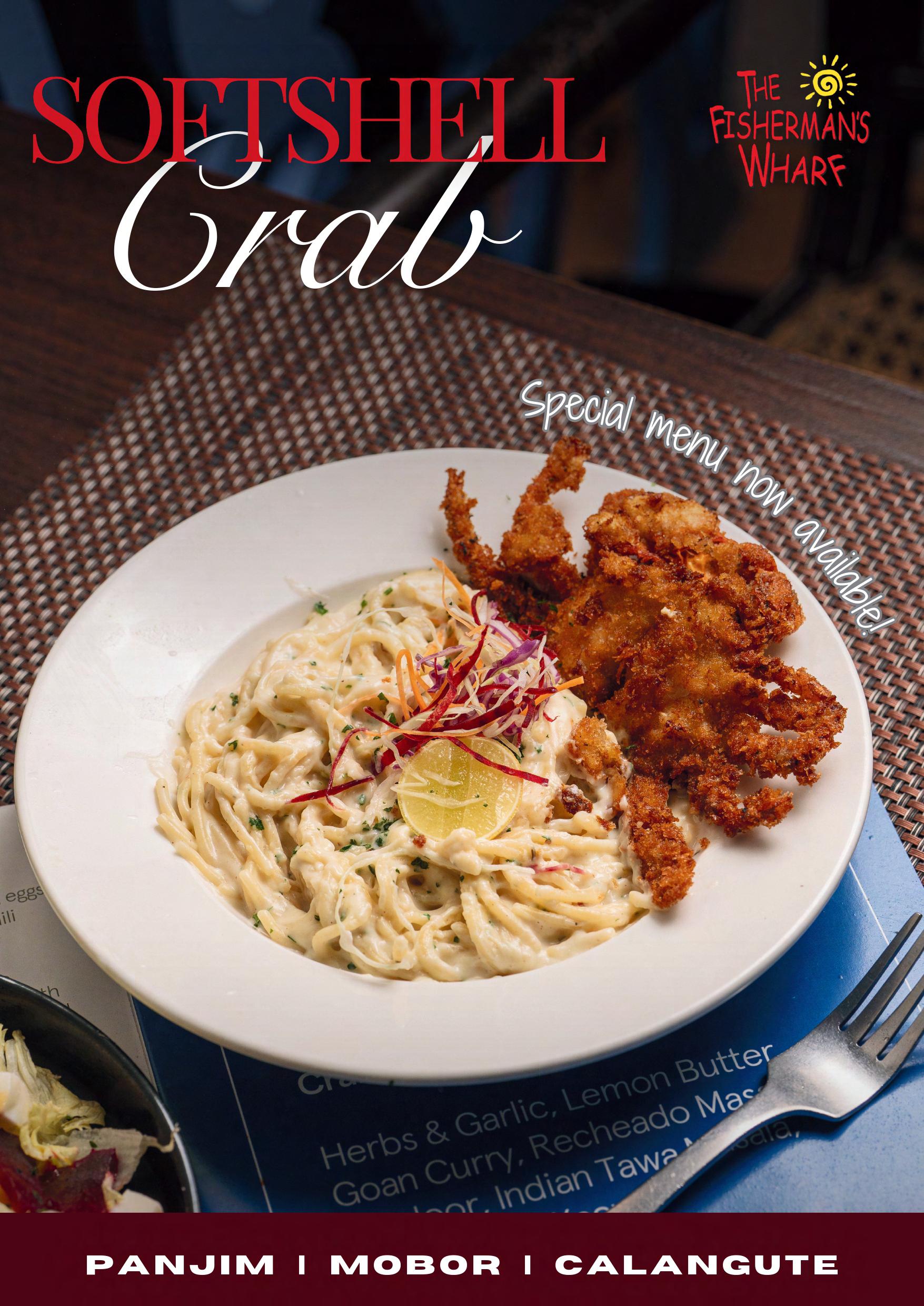
THE FORGOTTEN MILLETS
Why Minor Grains are Major for Your Health
By Sunil Malhotra

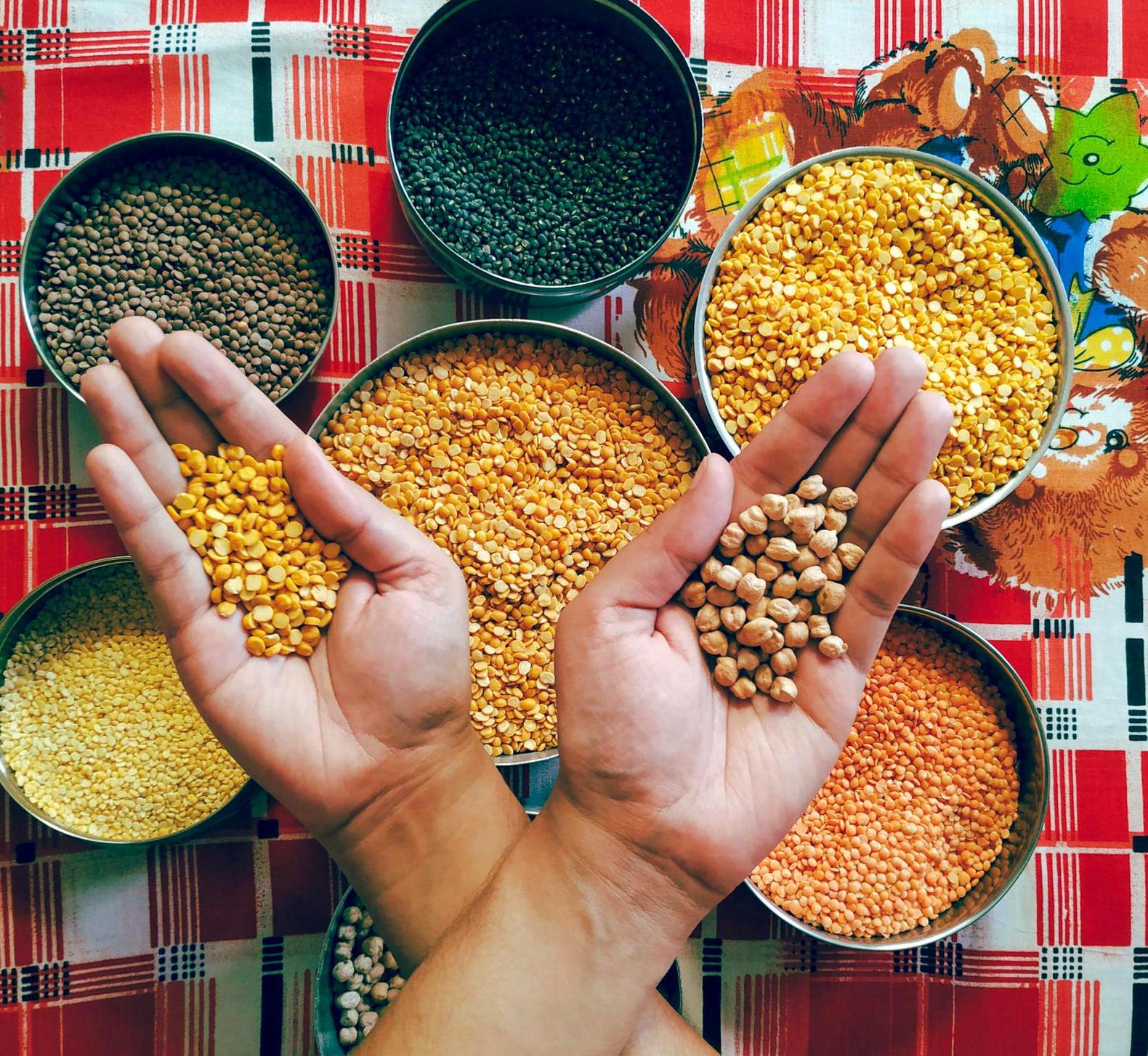
Walk into any health-conscious kitchen today and you’re likely to hear about quinoa or chia seeds. But before we reached for imported superfoods, India already had its own treasures, waiting quietly in sacks in village markets and remembered mostly by older generations. These are the forgotten millets, grains like kodo, barnyard, little, proso, and foxtail, once staples in many Indian households, now making a quiet but powerfulcomeback.
WHY MILLETS MATTER
Millets are small but mighty. They thrive in tough conditions where rice and wheat struggle, needing very little water and growing quickly even in poor soil. For farmers, this means resilience. For us, it means food that is naturally sustainable and loaded with nutrients. Unlike polished rice that spikes
blood sugar, millets are low-glycemic and packed with fiber. They are also rich in minerals like iron, magnesium, and calcium, making them essential for bone health, energy, and overallimmunity.
THE CASE FOR THE “MINOR” MILLETS
While ragi and bajra have found their way back into urban diets, the smaller cousins, kodo, barnyard, and little millet, remainlesscelebrated.Yeteachofthemhasuniquestrengths. Kodo millet is rich in antioxidants and easy on the stomach, makingitidealfordigestionandweightmanagement.
Barnyard millet has one of the lowest carbohydrate contents amongcereals,whichmakesitablessingfordiabetics.
Little millet is high in B vitamins and iron, giving it a role in supportingenergyandtacklinganemia.
FOOD & HEALTH

These grains were once everyday food, often cooked as porridges, upmas, or rotis. But as polished rice and refined flour dominated our plates, millets were pushed aside as “poor man’s food.” Ironically, today they are being rediscovered as premium,almostexotic.
A RETURN TO THE TABLE
The revival is not just nutritional, it is cultural. Across India, chefs, home cooks, and wellness advocates are reinventing millets in creative ways. From millet risottos in fine dining restaurants to millet laddoos in festive boxes, the grain is no longer a forgotten cousin. It is standing proudly as a smart, consciouschoice.
The beauty of millets is their versatility. They can slip easily into daily meals, replacing rice in a pulao, blending into dosa batters, or forming the base of a summer salad. Unlike strict
diets, millets don’t demand you give up flavour or comfort. They simply invite you to return to what our ancestors always knew, that small changes in what we eat can have big impactsonhowwelive.
THE BIGGER PICTURE
Choosing millets isn’t just about personal health. It is about participating in a cycle that supports farmers, saves water, and preserves traditional crops. It is about understanding that “local” and “seasonal” aren’t trends, but wisdom we briefly forgot.
Sothenexttimeyouplanyourweeklygroceries,slipinabagof kodo or barnyard millet. Cook it with curiosity, taste it with patience, and you might just realise that the future of eating wellliesinthegrainsofthepast.





The Connection Between Digestion and Skin Health GUT AND GLOW
By Sunil Malhotra


We’ve all heard the saying “you are what you eat,” but perhaps more accurately, you are what your gut absorbs. The link between digestion and skin health is much stronger than most of us realise. That glow we chase with expensive creams and facials often has its roots much deeper, in the tiny ecosystem ofmicrobes,enzymes,andnutrientsthatmakeupourgut.
THE GUT-SKIN CONNECTION
Our digestive system does far more than break down food. It houses trillions of bacteria that form the gut microbiome, and these little organisms have an enormous role in regulating everything from immunity to inflammation. When the gut is
balanced, nutrients are absorbed efficiently and inflammation is kept in check. When it is disrupted, toxins build up, inflammation spikes, and the skin often shows the first signs of distress, think acne, dullness, rashes, or even premature ageing.
The skin, after all, is the body’s largest organ, and like every organ, it depends on the nutrients carried through our blood. If digestion is poor, if the microbiome is imbalanced, or if the body is constantly struggling with processed foods and sugar, theskinsuffers.
FOODS THAT NOURISH THE GUT (AND SKIN)
FOOD & HEALTH

Certain foods have a direct impact on both gut health and skin radiance:
Ÿ Probiotics: Yogurt, kefir, kanji, and other fermented foods replenish the gut with good bacteria, calming inflammationandkeepingskinclearer.
Ÿ Prebiotics: Garlic, onions, bananas, and oats feed those goodbacteria,ensuringtheythrive.
Ÿ Fiber-rich foods: Whole grains, fruits, and vegetables keep digestion moving smoothly, preventing toxin build-up thatdullstheskin.
Ÿ Omega-3s: Found in walnuts, flaxseeds, and fatty fish, these healthy fats reduce inflammation and keep skin supple.
Ÿ Polyphenols: Berries, green tea, and dark chocolate provideantioxidantsthatrepairskinfromwithin.
LIFESTYLE AND THE GLOW FACTOR
It isn’t just about what we eat, but also how we live. Chronic stress, irregular sleep, and dehydration all disturb the gut, and the skin is quick to reflect that imbalance. On the other hand, regular movement, mindful eating, and adequate rest give the digestive system the chance to function optimally. The result showsuponthefacewithouttheneedforfilters.
LOOKING BEYOND THE MIRROR
Skin is often the body’s messenger. When breakouts, dullness, or rashes appear, it might not always be a cosmetic issue but a deeper signal that the gut needs attention. By shifting focus from surface-level fixes to inner nourishment, we begin to treatthecause,notjustthesymptom.
The glow that comes from within may take longer than a quick facial, but it lasts longer and feels better. It is a glow that speaks of balance, care, and connection between the inside andtheoutside.

BEYOND BAMBOO
The Real Story of Eco-Friendly Tableware
By Gauri Ghadge

The next time you walk into a café and see “biodegradable” cutleryneatlyarrangedbesidebambooplates,it’stemptingto believe you’re witnessing sustainability in action. The rustic look, the earthy colours, the word eco-friendly printed in green, itallfeelsvirtuous.Butintheworldofhospitality,where convenience meets conscience, good intentions often hide complex truths. The real question is not what it’s made of, but whathappensafteryouthrowitaway.
THE COMFORTING ILLUSION OF “GREEN”
The rise of biodegradable tableware was born out of guilt and good marketing. Plastic bans across India and the world gave
birth to a booming market of “eco-alternatives.” Bamboo, bagasse, palm leaf, cornstarch, and PLA each promised a plastic-free future. Yet, beneath the claims lies a reality both surprising and sobering: most of these items are single-use productswearingasustainabledisguise.
For a plate, cup, or fork to truly return to nature, it must enter a controlled industrial composting system where temperature, moisture, and microbial activity are maintained at roughly 58 °C for several weeks, the conditions defined by EN 13432 (EU) and ASTM D6400 (US) standards. These standards test biodegradation in industrial facilities, not in home compost

bins or open soil. Yet such facilities are scarce across India and most of the world. When a so-called “compostable” cup lands in ordinary waste or landfill, it behaves almost identically to conventionalplastic
In short, a bamboo fork isn’t sustainable if it’s headed to a landfill.
THE MYTH OF VANISHING PLASTICS
The popular belief that biodegradable means “it disappears anywhere” has been repeatedly disproven. Controlled trials at the Scripps Institution of Oceanography and follow-up marine exposure studies confirm that PLA, the plant-based plastic used in many compostable cups, showed no measurable biodegradation after over 12 months in seawater, while natural fibres such as wood pulp and paper decomposed. The reason lies in chemistry: PLA and similar bioplastics need the high heat and microbial density of industrial composting to break down. Outside those conditions, they act like conventional plastics, slowly fragmenting into microplastics. So when hotels or event venues proudly replace their plastic spoons with “biodegradable” ones but still send mixed waste tolandfills,thebenefitismostlyaesthetic.
WHAT THE NUMBERS REVEAL
LifeCycleAssessments(LCAs), thescientificgoldstandardfor evaluating environmental impact, offer clear lessons. The United Nations Environment Programme’s meta-analysis on single-use tableware concluded that the end-of-life scenario determinesnearlyeverything.Compostablesperformwellonly when they are actually composted under industrial conditions. When they end up in landfills or incinerators, the fate of most
single-use items, their overall carbon and pollution impact convergeswith,orsometimesexceeds,thatofplastics
Conversely, reusables win when managed efficiently. Lifecycle studies show that a stainless-steel spoon or ceramic plate overtakes single-use alternatives after roughly a few dozen uses, often around 20–30 cycles when washing systems areenergy-efficient
The trade-off? Reusables require investment, discipline, and design thinking. In hotels, airlines, or banquets, they demand logistics, tracking, and washing infrastructure. But once in place,theenvironmentalreturncompoundsrapidly.
THE DARK SIDE OF “NATURAL”
“Plastic-free” doesn’t always mean harmless. Many mouldedfibre bowls and plates, those elegant beige dishes made from paper pulp or bagasse, were historically coated with PFAS, the notorious “forever chemicals” that repel grease but persist in soil and water. Regulatory pressure has mounted: Denmark banned PFAS in paper and board food packaging in 2020, California’s AB 1200 restricted PFAS in plant-fibre packaging from 2023, and the EU REACH proposal (2025) seeks a unionwide phase-out. Yet not every manufacturer has caught up, andPFASresiduesremainahiddenhazardinsomeimports. Before any purchase, hospitality buyers should demand PFASfree certification and current test reports. Without that assurance, even your greenest-looking bowl could be a longtermpollutant.
Palm-leaf or areca-sheath plates, another darling of the ecowave, are not automatically low-carbon either. Their impact varies dramatically with distance and drying method. When

processed locally using solar or low-energy drying, they perform well. When shipped across states or sun-dried using diesel-powered heaters, their footprint can exceed that of paper. In sustainability, geography matters as much as material.
COMPOSTABLE VS. COMPOST-READY
Here lies hospitality’s biggest blind spot: infrastructure. In India, only a small fraction of municipal waste is treated through organised composting or biomethanation — historically around 10 %, with wide regional variation — and most facilities do not accept compostable foodware because it fails to break down fast enough or cannot be distinguished fromplasticduringsorting.
This means a “compostable” cup used at a beach shack or hotel buffet is almost certainly destined for landfill. Until collection systems evolve to handle these materials, their sustainability is theoretical. As one environmental consultant puts it, “Compostability without composting is like designing parachuteswithnowheretoland.”
WHEN REUSE BECOMES LUXURY
The true heroes of sustainable hospitality aren’t made from plants at all, they’re the sturdy, elegant reusables we used to take for granted. Fine dining already embraces this: ceramic, glass, and steel. The challenge is to extend the model to highvolumecafés,events,andquick-serviceoutlets.
Advances in logistics are making it possible. Circular catering systemsinEuropenowwashandre-circulatereusablewareat industrial scales. Start-ups in India are piloting similar models with steel and melamine plates for corporate canteens and
weddings, complete with RFID tracking to ensure items return. The economics are promising: one plate, used fifty times, costs lessoveritslifetimethanfiftysingle-useones.
Reusablesarenotnostalgia;they’reefficiencyreborn.
HOW THE INDUSTRY CAN LEAD
Forhospitalitybusinesses,theroadmapisclear:
Ÿ Audit your waste fate. If there’s no industrial composting, skipcompostables.
Ÿ Demand proof. Ask for PFAS-free certification and lifecycledata,notjustgreenicons.
Ÿ Local first. Fewermilesmeanloweremissions.
Ÿ Educate guests and staff. Sustainability collapses withoutparticipation.
Ÿ Invest in reuse systems. Washing, tracking, and logistics arecheaperthanbranddamagefromgreenwashing. Sustainability isn’t a one-time procurement decision; it’s an operationalmindset.
CONCLUSION: THE TASTE OF TRUTH
Bamboo cutlery may look noble, but without systems that close the loop, it’s just another form of disposability. Real sustainability begins not with swapping materials but with rethinking habits. The goal is not to replace plastic forks with plant ones; it’s to question why every meal needs a new fork at all.
In the end, the most sustainable tableware is the one that never has to be thrown away. The future of eco-hospitality will belongtothosewhounderstandthat“green”isn’tacolour, it’s acommitment.


By Gauri Ghadge
Exploring East India, Chapter 8
Chandipur-on-Sea
Where the Sea Disappears and Returns

You arrive before sunrise, when the horizon is a whisper of pale rose. The air smells of salt and damp earth. Silver foam clings to your toes. But then you lookahead, thewaterisgone.
In Chandipur, on Odisha’s northern coast, the Bay of Bengal plays a daily trick: twice a day, the sea recedes as much as five kilometres, leaving a vast landscape of sand, puddles, and sky reflected in still pools. It is not spectacle as much as invitation, an emptied canvas waiting for footsteps. You walk, curious, bearing your own questions: how far? How long? When will the sea return? You find that more oftenthannot,theanswerliesinquietobservation.
THE
VANISHING
SEA: A SLOW FADE
Unlike dramatic tides elsewhere, Chandipur’s ebb is patient, almost polite. By late morning or early afternoon, the sea’s edge retreats, sometimes up to 5km.Thatwideexpanseofseabedrevealsridgesof sand, shallow rivulets, delicate shoals of seaweed, and, in corners, stranded fish darting for water.
Fishermen haul boats across this newfound desert; children chase crabs; shorebirds descend like punctuationmarksintheemptiness.
Then, as the tide returns, the landscape changes again. Water edges creep inward, pools deepen, the flat sand darkens, and the sea reclaims its territory. It’s a ritual of disappearance and return, hypnotic,elemental.
WALKING WHERE WATER ONCE WAS
Walkingontheexposedseabedatlowtidefeelslike trespassing into another world. Every step sends ripples across wet sand. The soil beneath shifts slightly, cool and soft. Potholes full of shallow water form mirror windows to the sky. You pause at one, look down, clouds inverted. Here, the distance becomes your playmate; you can wander kilometres from the shore, lean into silence, and lose yourself in thegeometryofundulationsandlight.
In these moments, the horizon recedes. You feel, not see, the sea, as if it hovers behind the emptiness.
TRAVEL TALES
You lie flat, listen to the wind, hear distant gull calls, feel your pulse slow. The vanishing becomes a lullaby.
THE RETURN: TIDE’S QUIET RECLAMATION
You don’t notice the first trickle. Then, a thin ribbon of water snakes across the flats. Channels widen. Pools merge. The ground darkens in patches. The sea’s edge inches forward. You watch its fingers reclaim the sand you touched. The merging lines slow, then sweep inwards as though pulled by memory. Within minutes, thin ribbons of water snake across the flats. Over the next hours, the flood tide stitchesthepoolstogetheruntiltheshorelinestands where it began. You stand in water again, aware of dusted sand on your boots, your body cooled, your moodstretchedwide..
It’s not abrupt. It is deliberate. It’s like greeting an oldfriend:careful,patient,sure.
BETWEEN TIDES: LIFE IN THE FLATS
While the sea is away, life asserts itself differently.Walk toward Balaramgadi, about 2–3 km north along the coast, where the Budhabalanga River meets the Bay of Bengal; when the tide is low, the flats connect shore and river like a temporary causeway.
At low tide, the flats connect land and river in unexpected ways. Boats are hauled; nets laid out to dry; fish sorted and traded. Locals tread the exposed flats to harvest shellfish and goodies left behindbyretreatingwaters.
Balaramgadi is more than a fishing port; it’s survival tuned to the tide. It pulses with barter, salt, and stories. Here, you might hear a fisherman argue a weight, or a child recount how the moon’s pull guides their day. And when the high tide returns, all of this reverses or merges; boats float, nets billow, waterslipsbackbetweenyourtoes.
A ROAD FROM SILENCE TO SHORE
The journey to Chandipur enhances the magic. From Balasore, just 16 km away, you traverse paddy plains, casuarina belts, and narrow lanes fringed with thatched homes. The last stretch unfolds as a ribbon along the coast until the silver curve of sand appears.Everybendopensanewhorizon.
From Bhubaneswar, the drive via NH-16 winds through towns, fields, and small markets. You arrive
quietly, as though sliding into another microcosm. Theseamightbeabsent,butitspresenceechoes. WHEN TO BE THERE, AND WHAT TO BRING
November to March is the most pleasant window: cool mornings, crisp skies, and gentle tides that make long beach walks effortless. Monsoon brings drama, but also mud and uncertainty. Summer demandsearlystartsbeforetheheatoverwhelms. Bring a tide chart or local guide (tidal timings shift), waterproof footwear or sandals, sun protection, a refillable water bottle, and a camera. Walk slow. Watch shadows. Be ready to stop and stare. And note:theseareturnsfasterthanyouthink.
WHISPERED HISTORIES & CURIOUS CONTRASTS
Beneath the calm, Chandipur has dual identities. It is part coastal refuge, part defence frontier. This stretch hosts DRDO’s Integrated Test Range, from where missiles like Akash, Agni, Prithvi, and Shaurya have been tested. Tourists cannot enter the testing zone, but the contrast, tranquil beach beside high security,surprisesmany.
Ecologically, Chandipur supports marine life at low tide: horseshoe crabs, red crabs, and other intertidal species. At Mirzapur (near Balaramgadi), horseshoecrabsarereported.
Further afield, hidden in forested hills, lies Panchalingeswar, a temple complex where five Shiva lingas sit under a perennial waterfall. If your itineraryallows,venturethereandfeeltheshiftfrom exposuretoenclosure,fromsalttoforest.
Road conditions between Balasore and Chandipur can vary with the season, so it’s best to check locally before you travel, the gradual slowdown from highwaytocoastallaneispartofthecharm.
THE HEARTBEAT YOU CARRY HOME
The memory of Chandipur lives in transitions. You remember walking across the seabed you never knew existed. You recall how briefly the sea lets you own its domain. You feel the hush when the sea vanishes and the hush when it returns. You leave with sand in your hair, water on your feet, and a deepersenseofhowtheEarthmoves.
Chandipur isn’t about conquering the coast; it’s about learning to surrender to its rhythm. You don’t beatthetide, youjoinit.









“Goa, Like You've Never Seen Before.”
Beyond beaches. Beyond clichés. Your real Goan journey begins here
COMING SOON
The ultimate travel guide that's made in Goa, for the world.










“Goa, Like You've Never Seen Before.”

The ultimate travel guide that's made in Goa, for the world
Beyond beaches. Beyond clichés. Your real Goan journey begins here
COMING SOON



































